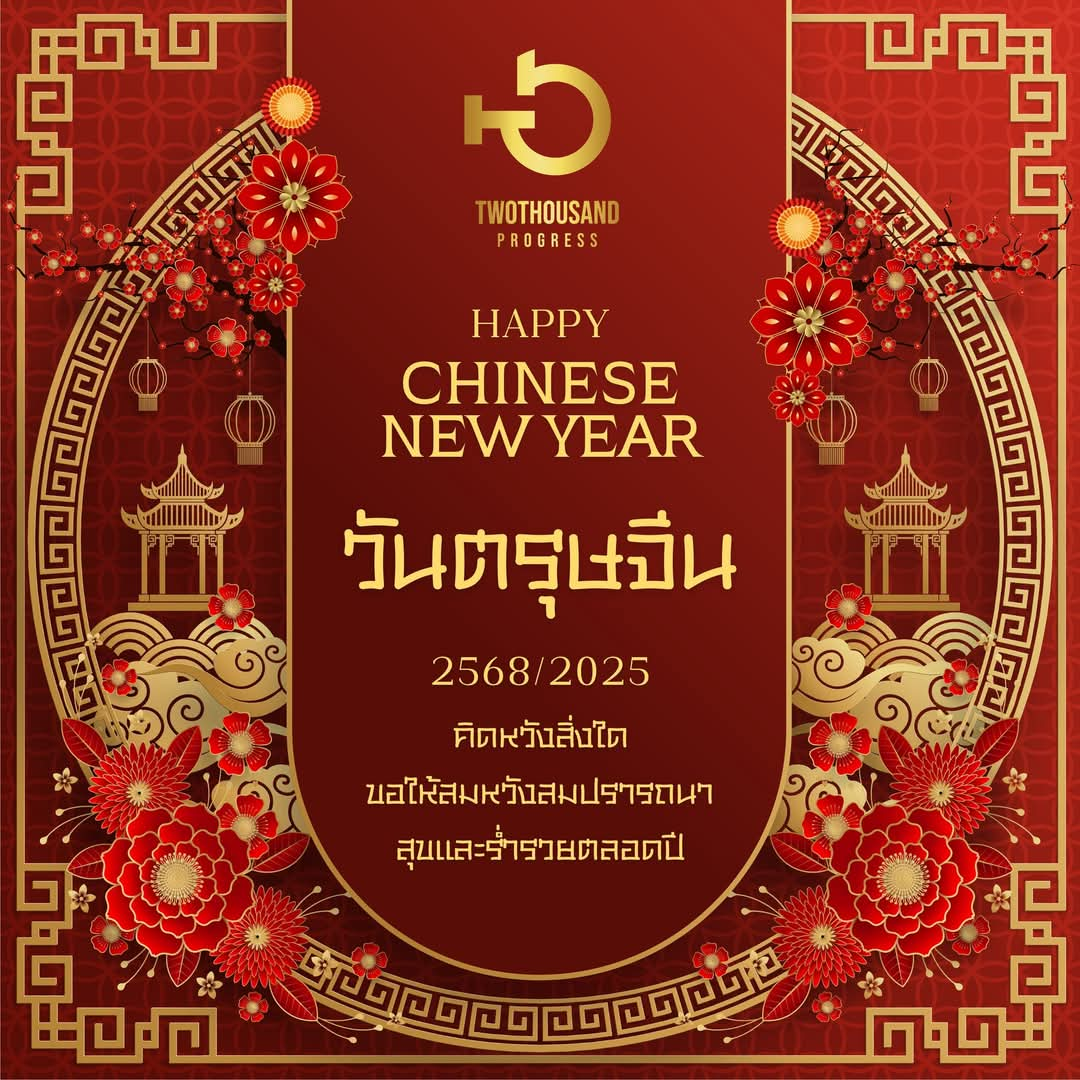1 ความคิดเห็น
0 การแบ่งปัน
129 มุมมอง
0 รีวิว

รายการ
ค้นพบผู้คนใหม่ๆ สร้างการเชื่อมต่อใหม่ๆ และรู้จักเพื่อนใหม่
- กรุณาเข้าสู่ระบบเพื่อกดถูกใจ แชร์ และแสดงความคิดเห็น!
- สหรัฐฯ และโคลอมเบียแตะเบรกระงับสงครามการค้ากันแบบหวุดหวิด หลังทำเนียบขาวประกาศว่าทางการโคลอมเบียยอมอนุญาตให้เที่ยวบินที่เนรเทศผู้อพยพผิดกฎหมายจากสหรัฐฯ ไปลงจอดได้แล้วแบบไร้เงื่อนไข
.
ก่อนหน้านั้น ประธานาธิบดี โดนัลด์ ทรัมป์ แห่งสหรัฐฯ ขู่จะแก้เผ็ดโคลอมเบียด้วยมาตรการรีดภาษีและคว่ำบาตรต่างๆ โทษฐานที่ไม่ยอมให้เครื่องบินทหารสหรัฐฯ นำผู้อพยพซึ่งถูกเนรเทศไปลงจอดตามนโยบายกวาดล้างผู้อพยพผิดกฎหมายอย่างครอบคลุมของเขา
.
อย่างไรก็ดี ทำเนียบขาวได้แถลงล่าสุดเมื่อค่ำวันอาทิตย์ (26) ว่า โคลอมเบียตกลงยอมรับผู้อพยพแล้ว และวอชิงตันจะยังไม่นำบทลงโทษที่ขู่ไว้มาใช้
.
“รัฐบาลโคลอมเบียยอมรับเงื่อนไขทุกอย่างของประธานาธิบดีทรัมป์ รวมถึงจะยอมรับผู้อพยพผิดกฎหมายชาวโคลอมเบียที่ถูกเนรเทศกลับจากสหรัฐฯ ด้วยเครื่องบินทหารอย่างไม่มีข้อจำกัด และไม่ถ่วงเวลาให้ชักช้า”คำแถลงของทำเนียบขาวระบุ
.
ทั้งนี้ ร่างคำสั่งขึ้นภาษีศุลกากรและคว่ำบาตรโคลอมเบียจะ “ถูกชะลอเอาไว้ก่อน โดยยังไม่มีการลงนามบังคับใช้ เว้นเสียแต่โคลอมเบียจะไม่ปฏิบัติตามข้อตกลง”
.
“เหตุการณ์ในวันนี้แสดงให้โลกเห็นอย่างชัดเจนว่าอเมริกาได้รับความเคารพกลับคืนมาอีกครั้ง ประธานาธิบดีทรัมป์ ...คาดหวังว่าชาติอื่นๆของโลกก็จะให้ความร่วมมืออย่างเต็มที่ในการยอมรับพลเมืองของพวกเขาที่ปรากฏตัวในสหรัฐฯอย่างผิดกฎหมายและถูกเนรเทศออกมา” คำแถลงนี้ของทำเนียบขาวสำทับ
.
ลูอิส กิลเบอร์โต มูริลโญ รัฐมนตรีกระทรวงการต่างประเทศโคลอมเบีย แถลงเมื่อค่ำวันอาทิตย์ (26) ว่า “เราได้ก้าวข้ามอุปสรรคกับรัฐบาลสหรัฐฯ แล้ว รัฐบาลโคลอมเบียได้เตรียมเครื่องบินของประธานาธิบดีไว้พร้อมสำหรับการอำนวยความสะดวกแก่พลเมืองที่กำลังจะเดินทางด้วยเที่ยวบินเนรเทศกลับมาถึงในช่วงเช้า”
.
คำแถลงดังกล่าวไม่ได้ระบุชัดว่าข้อตกลงที่ทำกับสหรัฐฯ รวมถึง “เครื่องบินทหาร” ด้วยหรือไม่ แต่ก็ไม่ได้โต้แย้งข้อมูลของทางทำเนียบขาว
.
สำหรับร่างมาตรการลงโทษของ ทรัมป์ นั้นมีทั้งการสั่งรีดภาษีสินค้านำเข้าจากโคลอมเบียในอัตรา 25% ซึ่งจะถูกปรับเพิ่มเป็น 50% ภายใน 1 สัปดาห์ รวมถึงจะเพิกถอนวีซ่าและใช้คำสั่งห้ามเดินทาง (travel ban) กับเจ้าหน้าที่รัฐบาลโคลอมเบีย นอกจากนี้ยังกำหนดมาตรการคว่ำบาตรฉุกเฉินต่อกระทรวงการคลังและสถาบันทางการเงินของโคลอมเบียด้วย
.
ทรัมป์ ยังขู่จะเพิ่มความเข้มงวดในการตรวจคัดกรองพลเมืองและสินค้าต่างๆ จากโคลอมเบีย โดยก่อนที่จะมีประกาศข้อตกลงออกมานั้น โฆษกกระทรวงการต่างประเทศสหรัฐฯ ระบุว่าอเมริกาได้เริ่มระงับการออกวีซ่าที่สถานทูตประจำกรุงโบโกตาแล้วด้วย
.
โคลอมเบียถือเป็นประเทศคู่ค้ารายใหญ่อันดับ 3 ของสหรัฐฯ ในละตินอเมริกา ในขณะที่สหรัฐฯ เองถือเป็นคู่ค้าอันดับ 1 ของโคลอมเบีย ด้วยอานิสงส์จากข้อตกลงการค้าเสรีปี 2006 ซึ่งทำให้มูลค่าการค้าระหว่างกันเพิ่มเป็น 33,800 ล้านดอลลาร์ในปี 2023 โดยสหรัฐฯ เป็นฝ่ายได้เปรียบดุลการค้า 1,600 ล้านดอลลาร์ ตามข้อมูลจากสำนักงานสำมะโนประชากรสหรัฐฯ (US Census Bureau)
.
อเลโจ เซรวอนโกหัวหน้าเจ้าหน้าที่การลงทุนสำหรับตลาดเกิดใหม่ทวีปอเมริกา ของบริษัทบริหารความมั่งคั่ง ยูบีเอส โกลบอล เวลธ์ แมเนจเมนต์ บอกว่าสินค้าออกของโคลอมเบียราว 1 ใน 3 ต้องพึ่งพาอาศัยการเข้าถึงตลาดสหรัฐฯ โดยมูลค่าคิดเป็นประมาณ 4%ของจีดีพีของโคลอมเบียทีเดียว
.
ก่อนหน้านี้ ประธานาธิบดีกุสตาโว เปโตรได้กล่าวประณามการที่สหรัฐฯใช้เครื่องบินทหารขนชาวโคลอมเบียที่ถูกเนรเทศและบอกว่าเขาจะไม่มีทางตอบโต้ด้วยการบุกเข้าจับกุมและใส่กุญแจมือชาวอเมริกันส่งกลับไปยังสหรัฐฯหรอก เนื่องจาก “เรานั้นอยู่ตรงกันข้ามกับพวกนาซี”เขาเขียนเช่นนี้ในโพสต์องเขาบนแพลตฟอร์มX
.
อย่างไรก็ดีเขาบอกด้วยว่าโคลอมเบียยินดีต้อนรับผู้อพยพที่ถูกเนรเทศส่งตัวกลับบ้านซึ่งเดินทางมาด้วยเครื่องบินพลเรือนรวมทั้งเสนอที่จะจัดส่งเครื่องบินประจำตำแหน่งประธานาธิบดีของเขาไปอำนวยความสะดวกให้ผู้ถูกเนรเทศเหล่านี้ได้“กลับมาอย่างมีศักดิ์ศรี” อีกด้วย
.
ไม่ใช่เฉพาะโคลอมเบีย ทางด้านเม็กซิโกก็ได้ปฏิเสธในสัปดาห์ที่แล้วคำขออนุญาตให้เครื่องบินทหารสหรัฐฯลำหนึ่งซึ่งบรรทุกผู้อพยพมาลงจอดในเม็กซิโก
.
ส่วนในวันเสาร์ (25)กระทรวงการต่างประเทศบราซิลได้ประณาม “การปฏิบัติแบบลดทอนศักดิ์ศรี” ของชาวบราซิลหลังจากสหรัฐฯส่งผู้อพยพผิดกฎหมายกลับมาให้โดยใช้เที่ยวบินพาณิชย์ทว่าพวกเขาถูกใส่กุญแจมือขณะเดินขึ้นเครื่องตามรายงานข่าวของสื่อ เมื่อเดินทางถึงบราซิลแล้วมีผู้โดยสารบางคนโอดครวญว่าถูกปฏิบัติอย่างเลวร้ายระหว่างอยู่บนเครื่องบิน
.
อ่านเพิ่มเติม..https://sondhitalk.com/detail/9680000008687
..............
Sondhi Xสหรัฐฯ และโคลอมเบียแตะเบรกระงับสงครามการค้ากันแบบหวุดหวิด หลังทำเนียบขาวประกาศว่าทางการโคลอมเบียยอมอนุญาตให้เที่ยวบินที่เนรเทศผู้อพยพผิดกฎหมายจากสหรัฐฯ ไปลงจอดได้แล้วแบบไร้เงื่อนไข . ก่อนหน้านั้น ประธานาธิบดี โดนัลด์ ทรัมป์ แห่งสหรัฐฯ ขู่จะแก้เผ็ดโคลอมเบียด้วยมาตรการรีดภาษีและคว่ำบาตรต่างๆ โทษฐานที่ไม่ยอมให้เครื่องบินทหารสหรัฐฯ นำผู้อพยพซึ่งถูกเนรเทศไปลงจอดตามนโยบายกวาดล้างผู้อพยพผิดกฎหมายอย่างครอบคลุมของเขา . อย่างไรก็ดี ทำเนียบขาวได้แถลงล่าสุดเมื่อค่ำวันอาทิตย์ (26) ว่า โคลอมเบียตกลงยอมรับผู้อพยพแล้ว และวอชิงตันจะยังไม่นำบทลงโทษที่ขู่ไว้มาใช้ . “รัฐบาลโคลอมเบียยอมรับเงื่อนไขทุกอย่างของประธานาธิบดีทรัมป์ รวมถึงจะยอมรับผู้อพยพผิดกฎหมายชาวโคลอมเบียที่ถูกเนรเทศกลับจากสหรัฐฯ ด้วยเครื่องบินทหารอย่างไม่มีข้อจำกัด และไม่ถ่วงเวลาให้ชักช้า”คำแถลงของทำเนียบขาวระบุ . ทั้งนี้ ร่างคำสั่งขึ้นภาษีศุลกากรและคว่ำบาตรโคลอมเบียจะ “ถูกชะลอเอาไว้ก่อน โดยยังไม่มีการลงนามบังคับใช้ เว้นเสียแต่โคลอมเบียจะไม่ปฏิบัติตามข้อตกลง” . “เหตุการณ์ในวันนี้แสดงให้โลกเห็นอย่างชัดเจนว่าอเมริกาได้รับความเคารพกลับคืนมาอีกครั้ง ประธานาธิบดีทรัมป์ ...คาดหวังว่าชาติอื่นๆของโลกก็จะให้ความร่วมมืออย่างเต็มที่ในการยอมรับพลเมืองของพวกเขาที่ปรากฏตัวในสหรัฐฯอย่างผิดกฎหมายและถูกเนรเทศออกมา” คำแถลงนี้ของทำเนียบขาวสำทับ . ลูอิส กิลเบอร์โต มูริลโญ รัฐมนตรีกระทรวงการต่างประเทศโคลอมเบีย แถลงเมื่อค่ำวันอาทิตย์ (26) ว่า “เราได้ก้าวข้ามอุปสรรคกับรัฐบาลสหรัฐฯ แล้ว รัฐบาลโคลอมเบียได้เตรียมเครื่องบินของประธานาธิบดีไว้พร้อมสำหรับการอำนวยความสะดวกแก่พลเมืองที่กำลังจะเดินทางด้วยเที่ยวบินเนรเทศกลับมาถึงในช่วงเช้า” . คำแถลงดังกล่าวไม่ได้ระบุชัดว่าข้อตกลงที่ทำกับสหรัฐฯ รวมถึง “เครื่องบินทหาร” ด้วยหรือไม่ แต่ก็ไม่ได้โต้แย้งข้อมูลของทางทำเนียบขาว . สำหรับร่างมาตรการลงโทษของ ทรัมป์ นั้นมีทั้งการสั่งรีดภาษีสินค้านำเข้าจากโคลอมเบียในอัตรา 25% ซึ่งจะถูกปรับเพิ่มเป็น 50% ภายใน 1 สัปดาห์ รวมถึงจะเพิกถอนวีซ่าและใช้คำสั่งห้ามเดินทาง (travel ban) กับเจ้าหน้าที่รัฐบาลโคลอมเบีย นอกจากนี้ยังกำหนดมาตรการคว่ำบาตรฉุกเฉินต่อกระทรวงการคลังและสถาบันทางการเงินของโคลอมเบียด้วย . ทรัมป์ ยังขู่จะเพิ่มความเข้มงวดในการตรวจคัดกรองพลเมืองและสินค้าต่างๆ จากโคลอมเบีย โดยก่อนที่จะมีประกาศข้อตกลงออกมานั้น โฆษกกระทรวงการต่างประเทศสหรัฐฯ ระบุว่าอเมริกาได้เริ่มระงับการออกวีซ่าที่สถานทูตประจำกรุงโบโกตาแล้วด้วย . โคลอมเบียถือเป็นประเทศคู่ค้ารายใหญ่อันดับ 3 ของสหรัฐฯ ในละตินอเมริกา ในขณะที่สหรัฐฯ เองถือเป็นคู่ค้าอันดับ 1 ของโคลอมเบีย ด้วยอานิสงส์จากข้อตกลงการค้าเสรีปี 2006 ซึ่งทำให้มูลค่าการค้าระหว่างกันเพิ่มเป็น 33,800 ล้านดอลลาร์ในปี 2023 โดยสหรัฐฯ เป็นฝ่ายได้เปรียบดุลการค้า 1,600 ล้านดอลลาร์ ตามข้อมูลจากสำนักงานสำมะโนประชากรสหรัฐฯ (US Census Bureau) . อเลโจ เซรวอนโกหัวหน้าเจ้าหน้าที่การลงทุนสำหรับตลาดเกิดใหม่ทวีปอเมริกา ของบริษัทบริหารความมั่งคั่ง ยูบีเอส โกลบอล เวลธ์ แมเนจเมนต์ บอกว่าสินค้าออกของโคลอมเบียราว 1 ใน 3 ต้องพึ่งพาอาศัยการเข้าถึงตลาดสหรัฐฯ โดยมูลค่าคิดเป็นประมาณ 4%ของจีดีพีของโคลอมเบียทีเดียว . ก่อนหน้านี้ ประธานาธิบดีกุสตาโว เปโตรได้กล่าวประณามการที่สหรัฐฯใช้เครื่องบินทหารขนชาวโคลอมเบียที่ถูกเนรเทศและบอกว่าเขาจะไม่มีทางตอบโต้ด้วยการบุกเข้าจับกุมและใส่กุญแจมือชาวอเมริกันส่งกลับไปยังสหรัฐฯหรอก เนื่องจาก “เรานั้นอยู่ตรงกันข้ามกับพวกนาซี”เขาเขียนเช่นนี้ในโพสต์องเขาบนแพลตฟอร์มX . อย่างไรก็ดีเขาบอกด้วยว่าโคลอมเบียยินดีต้อนรับผู้อพยพที่ถูกเนรเทศส่งตัวกลับบ้านซึ่งเดินทางมาด้วยเครื่องบินพลเรือนรวมทั้งเสนอที่จะจัดส่งเครื่องบินประจำตำแหน่งประธานาธิบดีของเขาไปอำนวยความสะดวกให้ผู้ถูกเนรเทศเหล่านี้ได้“กลับมาอย่างมีศักดิ์ศรี” อีกด้วย . ไม่ใช่เฉพาะโคลอมเบีย ทางด้านเม็กซิโกก็ได้ปฏิเสธในสัปดาห์ที่แล้วคำขออนุญาตให้เครื่องบินทหารสหรัฐฯลำหนึ่งซึ่งบรรทุกผู้อพยพมาลงจอดในเม็กซิโก . ส่วนในวันเสาร์ (25)กระทรวงการต่างประเทศบราซิลได้ประณาม “การปฏิบัติแบบลดทอนศักดิ์ศรี” ของชาวบราซิลหลังจากสหรัฐฯส่งผู้อพยพผิดกฎหมายกลับมาให้โดยใช้เที่ยวบินพาณิชย์ทว่าพวกเขาถูกใส่กุญแจมือขณะเดินขึ้นเครื่องตามรายงานข่าวของสื่อ เมื่อเดินทางถึงบราซิลแล้วมีผู้โดยสารบางคนโอดครวญว่าถูกปฏิบัติอย่างเลวร้ายระหว่างอยู่บนเครื่องบิน . อ่านเพิ่มเติม..https://sondhitalk.com/detail/9680000008687 .............. Sondhi X0 ความคิดเห็น 0 การแบ่งปัน 1472 มุมมอง 0 รีวิว 3
3
- 0 ความคิดเห็น 0 การแบ่งปัน 139 มุมมอง 0 รีวิว
- 0 ความคิดเห็น 0 การแบ่งปัน 130 มุมมอง 0 รีวิว
- เมื่อวานล้ม..วันนี้ล้ม พรุ่งนี้ก็ล้มอีก...ฟุตบาท กทม!! (28/01/68) #news1 #ข่าววันนี้ #ข่าวดัง #ฟุตบาท #ความปลอดภัยในการก่อสร้าง #ฟุตบาทถนนพระอาทิตย์เมื่อวานล้ม..วันนี้ล้ม พรุ่งนี้ก็ล้มอีก...ฟุตบาท กทม!! (28/01/68) #news1 #ข่าววันนี้ #ข่าวดัง #ฟุตบาท #ความปลอดภัยในการก่อสร้าง #ฟุตบาทถนนพระอาทิตย์0 ความคิดเห็น 0 การแบ่งปัน 1178 มุมมอง 50 0 รีวิว
 5
5
- ชาวปาเลสไตน์พลัดถิ่นจำนวนเรือนหมื่นเรือนแสน หลั่งไหลกันเดินทางไปตามถนนสายหลัก เพื่อมุ่งหน้ากลับสู่ตอนเหนือของฉนวนกาซาแล้วเมื่อวันจันทร์ (27 ม.ค.) หลังจากกลุ่มฮามาสตกลงส่งมอบตัวประกันชาวอิสราเอลอีก 3 คนในช่วงต่อไปของสัปดาห์นี้ และกองทหารรัฐยิวก็เริ่มถอนกำลังออกจากการปิดกั้นช่องทางซึ่งสกัดไม่ให้ผู้พลัดถิ่นเหล่านี้ได้เดินทาง
.
ประชาชนจำนวนมากมาย บางคนอุ้มทารกเอาไว้ในอ้อมแขน หรือไม่แบกสมบัติข้าวของที่ยังเหลืออยู่เอาไว้บนบ่า มุ่งหน้าเดินเท้าขึ้นเหนือ ไปตามถนนสายที่ทอดยาวเลียบชายฝั่งทะเลเมดิเตอร์เรเนียน
.
“มันเหมือนกับฉันเกิดใหม่ขึ้นครั้ง และเราได้รับชัยชนะอีกครั้ง” เป็นคำกล่าวของ อุมม์ โมฮัมเหม็ด อาลี คุณแม่ชาวปาเลสไตน์ ที่เป็นส่วนหนึ่งของฝูงชนซึ่งเดินตามกันไปอย่างช้าๆ เป็นแถวยาวเหยียดหลายกิโลเมตรบนถนนเลียบทะเลสายดังกล่าว
.
พวกผู้เห็นเหตุการณ์เล่าว่า ชาวบ้านคนแรกเดินมาถึงเมืองกาซาซิตี้ในตอนเช้าตรู่ หลังจากจุดข้ามจากตอนใต้ของกาซา เปิดขึ้นเมื่อเวลา 7 โมงเช้าตามเวลาท้องถิ่น (ตรงกับเที่ยงวัน เวลาเมืองไทย) สำหรับจุดข้ามอีกจุดหนึ่งเปิดขึ้นในอีก 3 ชั่วโมงถัดมา โดยเป็นทางสำหรับยวดยานต่างๆ
.
“หัวใจผมกำลังเต้นแรง ผมคิดว่าผมจะไม่ได้กลับมาอีกแล้ว” เป็นคำพูดของ โอซามา วัย 50 ปี ซึ่งเป็นข้าราชการพลเรือนและเป็นคุณพ่อของลูก 5 คน ขณะที่เขาเดินทางถึงกาซาซิตี้ “ไม่ว่าการหยุดยิงนี้จะประสบความสำเร็จหรือไม่ เราก็จะไม่ยอมออกจากกาซาซิตี้และทางตอนเหนือนี่อีกแล้ว ถึงแม้อิสราเอลจะส่งรถถังมาเล่นงานพวกเราแต่ละคนก็ตาม ไม่มีการพลัดถิ่นที่อยู่กันอีกแล้ว”
.
หลังจากถูกสั่งให้ออกจากที่พำนักชั่วคราวซ้ำแล้วซ้ำอีกตลอดระยะเวลา 15 เดือนของสงครามครั้งนี้ ก็มีเสียงเชียร์เสียงโห่ร้องยินดีปะทุขึ้นจากที่พักพิงหลบภัยและเต็นท์ค่ายพักต่างๆ เมื่อครอบครัวชาวปาเลสไตน์ได้ยินข่าวที่ว่าจุดข้ามจะเปิดให้เดินทางผ่านแล้ว
.
“นอนไม่หลับเลย ฉันเก็บข้าวของทุกอย่างและพร้อมเดินทางตั้งแต่แสงตะวันแรกของวันแล้ว” เป็นคำกล่าวของ กอดา คุณแม่ลูก 5 “อย่างน้อยที่สุดเราก็กำลังจะกลับบ้าน ตอนนี้ฉันพูดได้แล้วว่าสงครามยุติแล้ว และฉันหวังว่ามันจะอยู่ในความสงบต่อไปอีก” เธอบอกกับรอยเตอร์ผ่านแอปแชต
.
ทั้งพวกเจ้าหน้าที่ฮามาสและชาวกาซาที่เป็นประชาชนธรรมดา ต่างปฏิเสธไม่เอาด้วยกับคำแนะนำของประธานาธิบดีโดนัลด์ ทรัมป์ แห่งสหรัฐฯ ที่เรียกร้องให้จอร์แดนและอียิปต์ รับชาวปาเลไสตน์จากดินแดนที่พินาศยับเยินจากสงครามแห่งนี้ อพยพเข้าไปพำนักอาศัยให้มากขึ้น มิหนำซ้ำยังเป็นการกระตุ้นความหวาดกลัวซึ่งมีมายาวนานของชาวปาเลสไตน์ที่ว่า พวกเขากำลังจะถูกผลักไสให้ออกจากบ้านของพวกเขาไปตลอดกาล
.
ตามเงื่อนไขของข้อตกลงหยุดยิงที่กระทำกันคราวนี้ ผู้ที่พำนักอาศัยในตอนเหนือกาซา จะได้รับอนุญาตให้เดินทางกลับบ้านได้ตั้งแต่ช่วงสุดสัปดาห์ท่ผ่านมา ทว่าในวันอาทิตย์ (26 ) อิสราเอลขัดขวางเรื่องนี้ โดยกล่าวหาฮามาสละเมิดเงื่อนไขในข้อตกลง
.
อย่างไรก็ดี ถึงตอนค่ำวันเดียวกัน สำนักนายกรัฐมนตรีอิสราเอลแถลงว่า สามารถตกลงกับฮามาสได้แล้ว โดยฮามาสจะปล่อย อาร์เบล เยฮุด ตัวประกันที่เป็นพลเรือนหญิงที่เดิมคาดว่า จะได้รับการปล่อยตัวตั้งแต่วันเสาร์ที่ผ่านมา พร้อมกับตัวประกันอีก 3 คนในวันพฤหัสฯ (30) และปล่อยเพิ่มอีก 3 คนในวันเสาร์ (1 ก.พ.)
.
คำแถลงยังระบุว่า อิสราเอลจะอนุญาตให้ชาวปาเลสไตน์เดินทางได้ตั้งแต่เช้าวันจันทร์ ซึ่งฮามาสระบุว่าเป็น “ชัยชนะสำหรับชาวปาเลสไตน์ และสัญญาณความล้มเหลวของแผนการยึดครองและบังคับย้ายถิ่นฐาน”
.
สำหรับคำแนะนำของทรัมป์นั้น อยู่ในลักษณะของการที่เขาเสนอไอเดียกับพวกผู้สื่อข่าวระหว่างเดินทางบนเครื่องบินประจำตำแหน่งแอร์ฟอร์ซ วัน เมื่อวันเสาร์ (25) ว่า จอร์แดนและอียิปต์ ควรอ้าแขนรับชาวปาเลสไตน์ราว 2.4 ล้านคนจากกาซาที่พังพินาศจากสงครามที่ทำให้ประชาชนนับหมื่นเสียชีวิตและนำไปสู่วิกฤตมนุษยธรรมเลวร้าย
.
ประมุขทำเนียบขาวเสริมว่า จะดึงชาติอาหรับบางชาติเข้ามามีส่วนร่วม และสร้างที่พักอาศัยเพื่อให้ชาวปาเลสไตน์ได้ใช้ชีวิตอย่างสงบ ก่อนสำทับว่า แนวทางนี้อาจเป็นได้ทั้งแนวทางชั่วคราวหรือถาวร
.
ปัจจุบัน จอร์แดนรองรับชาวปาเลสไตน์หลายล้านคนอยู่แล้ว ขณะที่มีชาวปาเลสไตน์อีกหลายหมื่นคนอาศัยอยู่ในอียิปต์ อย่างไรก็ดี ทั้งสองประเทศรวมถึงชาติอาหรับอื่นๆ ต่างปฏิเสธแนวคิดในการย้ายชาวปาเลสไตน์จากฉนวนกาซาไปยังประเทศอื่นๆ ขณะเดียวกันชาวปาเลสไตน์ก็ต้องการให้กาซาเป็นส่วนหนึ่งของรัฐปาเลสไตน์ในอนาคต
.
ขณะที่นายกรัฐมนตรีเบนจามิน เนทันยาฮู ก็แสดงท่าทีคัดค้านแนวคิดดังกล่าว ทางด้าน เบซาเลล สโมทริช รัฐมนตรีคลังอิสราเอลที่สังกัดพรรคขวาจัด บอกว่า “การคิดนอกกรอบ” เท่านั้นที่จะทำให้เกิดสันติภาพได้จริง และกล่าวยกย่องข้อเสนอของทรัมป์เป็น “ไอเดียเยี่ยมยอด” ซึ่งจะทำให้ชาวปาเลสไตน์มีโอกาสสร้างชีวิตใหม่ที่ดีขึ้นในประเทศอื่น พร้อมเสริมว่า จะวางแผนเพื่อดำเนินการตามข้อเสนอนี้
.
สำหรับ ฟรานเชสกา อัลบานีส ผู้รายงานพิเศษด้านสิทธิมนุษยชนของสหประชาชาติ โพสต์บนแพลตฟอร์มเอ็กซ์ว่า การกวาดล้างเผ่าพันธุ์ก็เป็นการคิดนอกกรอบ ซึ่งไม่ว่าจะด้วยรูปแบบไหนก็ถือเป็นการกระทำที่ผิดกฎหมาย ผิดศีลธรรม และไร้ความรับผิดชอบ
.
บาเซม นาอิม สมาชิกกลุ่มการเมืองของฮามาส ยืนกรานว่า ชาวปาเลสไตน์ไม่มีวันยอมรับข้อเสนอของทรัมป์ที่ดูเหมือนเจตนาดีภายใต้ข้ออ้างในการฟื้นฟูกาซา ขณะที่ซามี อาบู ซูฮ์รี เจ้าหน้าที่อีกคน เรียกร้องทรัมป์ไม่ให้เสนอไอเดียผิดพลาดแบบที่อดีตประธานาธิบดีโจ ไบเดน เคยพยายามมาก่อน
.
สันนิบาตอาหรับคัดค้านไอเดียของทรัมป์เช่นเดียวกัน โดยเตือนว่า ความพยายามบังคับให้ชาวปาเลสไตน์อพยพออกจากถิ่นฐานเท่ากับเป็นการกวาดล้างเผ่าพันธุ์
.
อัยมาน ซาฟาดี รัฐมนตรีต่างประเทศจอร์แดน รวมทั้งกระทรวงต่างประเทศอียิปต์ ยืนยันจุดยืนในการต่อต้านการอพยพชาวปาเลสไตน์ออกจากกาซาไม่ว่าระยะยาวหรือระยะสั้น
.
ประธานาธิบดีมาห์มูด อับบาสของปาเลสไตน์ที่ได้รับการสนับสนุนจากตะวันตก ประณามไอเดียของทรัมป์ และประกาศว่า ชาวปาเลสไตน์จะไม่ยอมทิ้งบ้านเกิดอย่างแน่นอน
.
อ่านเพิ่มเติม..https://sondhitalk.com/detail/9680000008688
..............
Sondhi Xชาวปาเลสไตน์พลัดถิ่นจำนวนเรือนหมื่นเรือนแสน หลั่งไหลกันเดินทางไปตามถนนสายหลัก เพื่อมุ่งหน้ากลับสู่ตอนเหนือของฉนวนกาซาแล้วเมื่อวันจันทร์ (27 ม.ค.) หลังจากกลุ่มฮามาสตกลงส่งมอบตัวประกันชาวอิสราเอลอีก 3 คนในช่วงต่อไปของสัปดาห์นี้ และกองทหารรัฐยิวก็เริ่มถอนกำลังออกจากการปิดกั้นช่องทางซึ่งสกัดไม่ให้ผู้พลัดถิ่นเหล่านี้ได้เดินทาง . ประชาชนจำนวนมากมาย บางคนอุ้มทารกเอาไว้ในอ้อมแขน หรือไม่แบกสมบัติข้าวของที่ยังเหลืออยู่เอาไว้บนบ่า มุ่งหน้าเดินเท้าขึ้นเหนือ ไปตามถนนสายที่ทอดยาวเลียบชายฝั่งทะเลเมดิเตอร์เรเนียน . “มันเหมือนกับฉันเกิดใหม่ขึ้นครั้ง และเราได้รับชัยชนะอีกครั้ง” เป็นคำกล่าวของ อุมม์ โมฮัมเหม็ด อาลี คุณแม่ชาวปาเลสไตน์ ที่เป็นส่วนหนึ่งของฝูงชนซึ่งเดินตามกันไปอย่างช้าๆ เป็นแถวยาวเหยียดหลายกิโลเมตรบนถนนเลียบทะเลสายดังกล่าว . พวกผู้เห็นเหตุการณ์เล่าว่า ชาวบ้านคนแรกเดินมาถึงเมืองกาซาซิตี้ในตอนเช้าตรู่ หลังจากจุดข้ามจากตอนใต้ของกาซา เปิดขึ้นเมื่อเวลา 7 โมงเช้าตามเวลาท้องถิ่น (ตรงกับเที่ยงวัน เวลาเมืองไทย) สำหรับจุดข้ามอีกจุดหนึ่งเปิดขึ้นในอีก 3 ชั่วโมงถัดมา โดยเป็นทางสำหรับยวดยานต่างๆ . “หัวใจผมกำลังเต้นแรง ผมคิดว่าผมจะไม่ได้กลับมาอีกแล้ว” เป็นคำพูดของ โอซามา วัย 50 ปี ซึ่งเป็นข้าราชการพลเรือนและเป็นคุณพ่อของลูก 5 คน ขณะที่เขาเดินทางถึงกาซาซิตี้ “ไม่ว่าการหยุดยิงนี้จะประสบความสำเร็จหรือไม่ เราก็จะไม่ยอมออกจากกาซาซิตี้และทางตอนเหนือนี่อีกแล้ว ถึงแม้อิสราเอลจะส่งรถถังมาเล่นงานพวกเราแต่ละคนก็ตาม ไม่มีการพลัดถิ่นที่อยู่กันอีกแล้ว” . หลังจากถูกสั่งให้ออกจากที่พำนักชั่วคราวซ้ำแล้วซ้ำอีกตลอดระยะเวลา 15 เดือนของสงครามครั้งนี้ ก็มีเสียงเชียร์เสียงโห่ร้องยินดีปะทุขึ้นจากที่พักพิงหลบภัยและเต็นท์ค่ายพักต่างๆ เมื่อครอบครัวชาวปาเลสไตน์ได้ยินข่าวที่ว่าจุดข้ามจะเปิดให้เดินทางผ่านแล้ว . “นอนไม่หลับเลย ฉันเก็บข้าวของทุกอย่างและพร้อมเดินทางตั้งแต่แสงตะวันแรกของวันแล้ว” เป็นคำกล่าวของ กอดา คุณแม่ลูก 5 “อย่างน้อยที่สุดเราก็กำลังจะกลับบ้าน ตอนนี้ฉันพูดได้แล้วว่าสงครามยุติแล้ว และฉันหวังว่ามันจะอยู่ในความสงบต่อไปอีก” เธอบอกกับรอยเตอร์ผ่านแอปแชต . ทั้งพวกเจ้าหน้าที่ฮามาสและชาวกาซาที่เป็นประชาชนธรรมดา ต่างปฏิเสธไม่เอาด้วยกับคำแนะนำของประธานาธิบดีโดนัลด์ ทรัมป์ แห่งสหรัฐฯ ที่เรียกร้องให้จอร์แดนและอียิปต์ รับชาวปาเลไสตน์จากดินแดนที่พินาศยับเยินจากสงครามแห่งนี้ อพยพเข้าไปพำนักอาศัยให้มากขึ้น มิหนำซ้ำยังเป็นการกระตุ้นความหวาดกลัวซึ่งมีมายาวนานของชาวปาเลสไตน์ที่ว่า พวกเขากำลังจะถูกผลักไสให้ออกจากบ้านของพวกเขาไปตลอดกาล . ตามเงื่อนไขของข้อตกลงหยุดยิงที่กระทำกันคราวนี้ ผู้ที่พำนักอาศัยในตอนเหนือกาซา จะได้รับอนุญาตให้เดินทางกลับบ้านได้ตั้งแต่ช่วงสุดสัปดาห์ท่ผ่านมา ทว่าในวันอาทิตย์ (26 ) อิสราเอลขัดขวางเรื่องนี้ โดยกล่าวหาฮามาสละเมิดเงื่อนไขในข้อตกลง . อย่างไรก็ดี ถึงตอนค่ำวันเดียวกัน สำนักนายกรัฐมนตรีอิสราเอลแถลงว่า สามารถตกลงกับฮามาสได้แล้ว โดยฮามาสจะปล่อย อาร์เบล เยฮุด ตัวประกันที่เป็นพลเรือนหญิงที่เดิมคาดว่า จะได้รับการปล่อยตัวตั้งแต่วันเสาร์ที่ผ่านมา พร้อมกับตัวประกันอีก 3 คนในวันพฤหัสฯ (30) และปล่อยเพิ่มอีก 3 คนในวันเสาร์ (1 ก.พ.) . คำแถลงยังระบุว่า อิสราเอลจะอนุญาตให้ชาวปาเลสไตน์เดินทางได้ตั้งแต่เช้าวันจันทร์ ซึ่งฮามาสระบุว่าเป็น “ชัยชนะสำหรับชาวปาเลสไตน์ และสัญญาณความล้มเหลวของแผนการยึดครองและบังคับย้ายถิ่นฐาน” . สำหรับคำแนะนำของทรัมป์นั้น อยู่ในลักษณะของการที่เขาเสนอไอเดียกับพวกผู้สื่อข่าวระหว่างเดินทางบนเครื่องบินประจำตำแหน่งแอร์ฟอร์ซ วัน เมื่อวันเสาร์ (25) ว่า จอร์แดนและอียิปต์ ควรอ้าแขนรับชาวปาเลสไตน์ราว 2.4 ล้านคนจากกาซาที่พังพินาศจากสงครามที่ทำให้ประชาชนนับหมื่นเสียชีวิตและนำไปสู่วิกฤตมนุษยธรรมเลวร้าย . ประมุขทำเนียบขาวเสริมว่า จะดึงชาติอาหรับบางชาติเข้ามามีส่วนร่วม และสร้างที่พักอาศัยเพื่อให้ชาวปาเลสไตน์ได้ใช้ชีวิตอย่างสงบ ก่อนสำทับว่า แนวทางนี้อาจเป็นได้ทั้งแนวทางชั่วคราวหรือถาวร . ปัจจุบัน จอร์แดนรองรับชาวปาเลสไตน์หลายล้านคนอยู่แล้ว ขณะที่มีชาวปาเลสไตน์อีกหลายหมื่นคนอาศัยอยู่ในอียิปต์ อย่างไรก็ดี ทั้งสองประเทศรวมถึงชาติอาหรับอื่นๆ ต่างปฏิเสธแนวคิดในการย้ายชาวปาเลสไตน์จากฉนวนกาซาไปยังประเทศอื่นๆ ขณะเดียวกันชาวปาเลสไตน์ก็ต้องการให้กาซาเป็นส่วนหนึ่งของรัฐปาเลสไตน์ในอนาคต . ขณะที่นายกรัฐมนตรีเบนจามิน เนทันยาฮู ก็แสดงท่าทีคัดค้านแนวคิดดังกล่าว ทางด้าน เบซาเลล สโมทริช รัฐมนตรีคลังอิสราเอลที่สังกัดพรรคขวาจัด บอกว่า “การคิดนอกกรอบ” เท่านั้นที่จะทำให้เกิดสันติภาพได้จริง และกล่าวยกย่องข้อเสนอของทรัมป์เป็น “ไอเดียเยี่ยมยอด” ซึ่งจะทำให้ชาวปาเลสไตน์มีโอกาสสร้างชีวิตใหม่ที่ดีขึ้นในประเทศอื่น พร้อมเสริมว่า จะวางแผนเพื่อดำเนินการตามข้อเสนอนี้ . สำหรับ ฟรานเชสกา อัลบานีส ผู้รายงานพิเศษด้านสิทธิมนุษยชนของสหประชาชาติ โพสต์บนแพลตฟอร์มเอ็กซ์ว่า การกวาดล้างเผ่าพันธุ์ก็เป็นการคิดนอกกรอบ ซึ่งไม่ว่าจะด้วยรูปแบบไหนก็ถือเป็นการกระทำที่ผิดกฎหมาย ผิดศีลธรรม และไร้ความรับผิดชอบ . บาเซม นาอิม สมาชิกกลุ่มการเมืองของฮามาส ยืนกรานว่า ชาวปาเลสไตน์ไม่มีวันยอมรับข้อเสนอของทรัมป์ที่ดูเหมือนเจตนาดีภายใต้ข้ออ้างในการฟื้นฟูกาซา ขณะที่ซามี อาบู ซูฮ์รี เจ้าหน้าที่อีกคน เรียกร้องทรัมป์ไม่ให้เสนอไอเดียผิดพลาดแบบที่อดีตประธานาธิบดีโจ ไบเดน เคยพยายามมาก่อน . สันนิบาตอาหรับคัดค้านไอเดียของทรัมป์เช่นเดียวกัน โดยเตือนว่า ความพยายามบังคับให้ชาวปาเลสไตน์อพยพออกจากถิ่นฐานเท่ากับเป็นการกวาดล้างเผ่าพันธุ์ . อัยมาน ซาฟาดี รัฐมนตรีต่างประเทศจอร์แดน รวมทั้งกระทรวงต่างประเทศอียิปต์ ยืนยันจุดยืนในการต่อต้านการอพยพชาวปาเลสไตน์ออกจากกาซาไม่ว่าระยะยาวหรือระยะสั้น . ประธานาธิบดีมาห์มูด อับบาสของปาเลสไตน์ที่ได้รับการสนับสนุนจากตะวันตก ประณามไอเดียของทรัมป์ และประกาศว่า ชาวปาเลสไตน์จะไม่ยอมทิ้งบ้านเกิดอย่างแน่นอน . อ่านเพิ่มเติม..https://sondhitalk.com/detail/9680000008688 .............. Sondhi X0 ความคิดเห็น 0 การแบ่งปัน 1842 มุมมอง 0 รีวิว 8
8
- 0 ความคิดเห็น 0 การแบ่งปัน 127 มุมมอง 0 รีวิว
- 0 ความคิดเห็น 0 การแบ่งปัน 128 มุมมอง 0 รีวิว
- 0 ความคิดเห็น 0 การแบ่งปัน 66 มุมมอง 0 รีวิว
- ประเพณี ที่สืบเนื่องกันมาหลายพันปี...กับ ความเชื่อ ของคนที่เพิ่งเกิด "เมื่อวาน" คุณเลือกได้..ว่าจะยึดสิ่งไหน..
เฮงๆ รวยๆ ทุกท่าน.ประเพณี ที่สืบเนื่องกันมาหลายพันปี...กับ ความเชื่อ ของคนที่เพิ่งเกิด "เมื่อวาน" คุณเลือกได้..ว่าจะยึดสิ่งไหน.. 🙆 เฮงๆ รวยๆ ทุกท่าน.0 ความคิดเห็น 0 การแบ่งปัน 195 มุมมอง 0 รีวิว - รัสเซียอ้างยึดเมืองสำคัญทางยุทธศาสตร์ ในภาคตะวันออกของยูเครนได้อีกเมือง ขณะที่ความไม่แน่นอนเกี่ยวกับการสนับสนุนด้านการเงินของอเมริกาในยุคทรัมป์ 2.0 เริ่มส่งผล กลุ่มเอ็นจีโอในยูเครนโวยได้รับผลกระทบแล้ว บางแห่งจำเป็นต้องเปิดรับบริจาคเป็นครั้งแรก
.
กระทรวงกลาโหมรัสเซียประกาศเมื่อวันอาทิตย์ (26 ม.ค.) ว่า สามารถเข้ายึดเมืองเวลิกา โนโวซิลกา แคว้นโดเนตสก์ ที่ในช่วงก่อนสงครามเคยมีประชากรราว 5,000 คน
.
อย่างไรก็ดี เอพีระบุว่า ไม่สามารถตรวจสอบยืนยันข่าวนี้ได้ ขณะที่กองพลน้อยยานยนต์ที่ 110 ส่วนแยกของยูเครนอ้างว่า แค่ถอนตัวทางยุทธศาสตร์จากบางพื้นที่ของเมืองดังกล่าวเพื่อไม่ให้ถูกปิดล้อมเท่านั้น พร้อมยืนยันว่า ยังคงมีการสู้รบภายในเมืองโดยมีเป้าหมายทำให้รัสเซียได้รับความเสียหายมากที่สุดด้วยการใช้ปืนใหญ่และโดรนโจมตี อีกทั้งยังมีแม่น้ำเป็นอุปสรรคขัดขวางการรุกคืบของรัสเซีย
.
นักวิเคราะห์คาดการณ์มานานแล้วว่า ท้ายที่สุดแล้วกองกำลังรัสเซียจะเข้ายึดเมืองเวลิกา โนโวซิลกา ที่อยู่ห่างจากแคว้นดนิโปรเปตรอฟสก์ ของยูเครนเพียง 15 กิโลเมตร และหากการกล่าวอ้างของรัสเซียได้รับการยืนยันว่าเป็นความจริง จะทำให้เวลิกา โนโวซิลกาเป็นเมืองสำคัญแห่งแรกในแคว้นโดเนตสก์ที่ถูกตีแตกในปี 2025 นี้
.
ปีที่แล้วรัสเซียเข้ายึดเมืองอัฟดิอิฟกาและวูฮ์เรดาร์ ในแคว้นโดเนตส์หลังจากสู้รบดุเดือดเป็นเวลานาน โดยเมืองเหล่านั้นถูกโจมตีอย่างหนักด้วยปืนใหญ่ ระเบิดติดอุปกรณ์นำวิถี และโดรนก่อนที่จะแตก
.
นอกจากนั้น รัสเซียยังใช้เวลานานหลายเดือนในการพยายามเข้ายึดเมืองโปครอฟสก์และชาซีฟ ยาร์ ซึ่งเป็นที่มั่นสำคัญในโดเนตสก์ ทว่ายังไม่สำเร็จ แม้สามารถรุกคืบใกล้เข้าไปเรื่อยๆ
.
ในอีกด้านหนึ่ง พวกองค์กรพัฒนาเอกชน (เอ็นจีโอ) ในยูเครนที่ให้ความช่วยเหลือทหารผ่านศึกและครอบครัว เปิดเผยว่า ต้องระงับการดำเนินงาน เนื่องจากขาดการสนับสนุนทางการเงินของอเมริกา ภายหลังจากที่ มาร์โค รูบิโอ รัฐมนตรีต่างประเทศคนใหม่ของสหรัฐฯ ประกาศให้ระงับการให้ความช่วยเหลือแก่ต่างประเทศนาน 90 วัน โดยมีผลบังคับใช้ทั่วโลกตั้งแต่วันศุกร์ (24) เพื่อตรวจสอบว่า ความช่วยเหลือเหล่านั้นสอดคล้องกับนโยบายการต่างประเทศของประธานาธิบดีโดนัลด์ ทรัมป์หรือไม่
.
นอกจากนั้น เมื่อวันเสาร์ (25 ) เจ้าหน้าที่กว่า 10,000 คนขององค์การพัฒนาระหว่างประเทศของสหรัฐฯ (ยูเสด) ยังได้รับแจ้งให้ต้องปฏิบัติหน้าที่โดยอิงกับนโยบาย “อเมริกาต้องมาก่อน” หากฝ่าฝืนจะถูกดำเนินการทางวินัย
.
ทั้งนี้ สื่อรายงานว่า ช่วงสุดสัปดาห์ที่ผ่านมาเอ็นจีโอของยูเครนที่ได้รับเงินสนับสนุนจากวอชิงตันเริ่มได้รับคำสั่งให้ “หยุดงาน” ซึ่งหมายถึงการระงับโครงการและการเดินทางที่เกี่ยวข้องทั้งหมด
.
เวเทรัน ฮับ ซึ่งเป็นกลุ่มเอ็นจีโอที่ให้การสนับสนุนด้านกฎหมายและจิตวิทยาแก่ทหารผ่านศึกและครอบครัวในยูเครน เปิดเผยผ่านเฟซบุ๊กว่า ถูกบีบให้ระงับการดำเนินการหน่วยบริการใหญ่ที่สุด 2 ใน 3 แห่ง และจำเป็นต้องเปิดรับบริจาคเป็นครั้งแรกนับจากปี 2018
.
อย่างไรก็ดี ประธานาธิบดีโวโลดิมีร์ เซเลนสกี ยืนยันว่า ความช่วยเหลือทางทหารที่อเมริกาให้แก่ยูเครนจะยังดำเนินต่อไป แต่ไม่ได้ชี้แจงว่า ความช่วยเหลือด้านมนุษยธรรมจะถูกระงับหรือไม่ โดยที่ผ่านมากองทัพยูเครนพึ่งพิงความช่วยเหลือจากอเมริกาถึง 40%
.
อ่านเพิ่มเติม..https://sondhitalk.com/detail/9680000008689
..............
Sondhi Xรัสเซียอ้างยึดเมืองสำคัญทางยุทธศาสตร์ ในภาคตะวันออกของยูเครนได้อีกเมือง ขณะที่ความไม่แน่นอนเกี่ยวกับการสนับสนุนด้านการเงินของอเมริกาในยุคทรัมป์ 2.0 เริ่มส่งผล กลุ่มเอ็นจีโอในยูเครนโวยได้รับผลกระทบแล้ว บางแห่งจำเป็นต้องเปิดรับบริจาคเป็นครั้งแรก . กระทรวงกลาโหมรัสเซียประกาศเมื่อวันอาทิตย์ (26 ม.ค.) ว่า สามารถเข้ายึดเมืองเวลิกา โนโวซิลกา แคว้นโดเนตสก์ ที่ในช่วงก่อนสงครามเคยมีประชากรราว 5,000 คน . อย่างไรก็ดี เอพีระบุว่า ไม่สามารถตรวจสอบยืนยันข่าวนี้ได้ ขณะที่กองพลน้อยยานยนต์ที่ 110 ส่วนแยกของยูเครนอ้างว่า แค่ถอนตัวทางยุทธศาสตร์จากบางพื้นที่ของเมืองดังกล่าวเพื่อไม่ให้ถูกปิดล้อมเท่านั้น พร้อมยืนยันว่า ยังคงมีการสู้รบภายในเมืองโดยมีเป้าหมายทำให้รัสเซียได้รับความเสียหายมากที่สุดด้วยการใช้ปืนใหญ่และโดรนโจมตี อีกทั้งยังมีแม่น้ำเป็นอุปสรรคขัดขวางการรุกคืบของรัสเซีย . นักวิเคราะห์คาดการณ์มานานแล้วว่า ท้ายที่สุดแล้วกองกำลังรัสเซียจะเข้ายึดเมืองเวลิกา โนโวซิลกา ที่อยู่ห่างจากแคว้นดนิโปรเปตรอฟสก์ ของยูเครนเพียง 15 กิโลเมตร และหากการกล่าวอ้างของรัสเซียได้รับการยืนยันว่าเป็นความจริง จะทำให้เวลิกา โนโวซิลกาเป็นเมืองสำคัญแห่งแรกในแคว้นโดเนตสก์ที่ถูกตีแตกในปี 2025 นี้ . ปีที่แล้วรัสเซียเข้ายึดเมืองอัฟดิอิฟกาและวูฮ์เรดาร์ ในแคว้นโดเนตส์หลังจากสู้รบดุเดือดเป็นเวลานาน โดยเมืองเหล่านั้นถูกโจมตีอย่างหนักด้วยปืนใหญ่ ระเบิดติดอุปกรณ์นำวิถี และโดรนก่อนที่จะแตก . นอกจากนั้น รัสเซียยังใช้เวลานานหลายเดือนในการพยายามเข้ายึดเมืองโปครอฟสก์และชาซีฟ ยาร์ ซึ่งเป็นที่มั่นสำคัญในโดเนตสก์ ทว่ายังไม่สำเร็จ แม้สามารถรุกคืบใกล้เข้าไปเรื่อยๆ . ในอีกด้านหนึ่ง พวกองค์กรพัฒนาเอกชน (เอ็นจีโอ) ในยูเครนที่ให้ความช่วยเหลือทหารผ่านศึกและครอบครัว เปิดเผยว่า ต้องระงับการดำเนินงาน เนื่องจากขาดการสนับสนุนทางการเงินของอเมริกา ภายหลังจากที่ มาร์โค รูบิโอ รัฐมนตรีต่างประเทศคนใหม่ของสหรัฐฯ ประกาศให้ระงับการให้ความช่วยเหลือแก่ต่างประเทศนาน 90 วัน โดยมีผลบังคับใช้ทั่วโลกตั้งแต่วันศุกร์ (24) เพื่อตรวจสอบว่า ความช่วยเหลือเหล่านั้นสอดคล้องกับนโยบายการต่างประเทศของประธานาธิบดีโดนัลด์ ทรัมป์หรือไม่ . นอกจากนั้น เมื่อวันเสาร์ (25 ) เจ้าหน้าที่กว่า 10,000 คนขององค์การพัฒนาระหว่างประเทศของสหรัฐฯ (ยูเสด) ยังได้รับแจ้งให้ต้องปฏิบัติหน้าที่โดยอิงกับนโยบาย “อเมริกาต้องมาก่อน” หากฝ่าฝืนจะถูกดำเนินการทางวินัย . ทั้งนี้ สื่อรายงานว่า ช่วงสุดสัปดาห์ที่ผ่านมาเอ็นจีโอของยูเครนที่ได้รับเงินสนับสนุนจากวอชิงตันเริ่มได้รับคำสั่งให้ “หยุดงาน” ซึ่งหมายถึงการระงับโครงการและการเดินทางที่เกี่ยวข้องทั้งหมด . เวเทรัน ฮับ ซึ่งเป็นกลุ่มเอ็นจีโอที่ให้การสนับสนุนด้านกฎหมายและจิตวิทยาแก่ทหารผ่านศึกและครอบครัวในยูเครน เปิดเผยผ่านเฟซบุ๊กว่า ถูกบีบให้ระงับการดำเนินการหน่วยบริการใหญ่ที่สุด 2 ใน 3 แห่ง และจำเป็นต้องเปิดรับบริจาคเป็นครั้งแรกนับจากปี 2018 . อย่างไรก็ดี ประธานาธิบดีโวโลดิมีร์ เซเลนสกี ยืนยันว่า ความช่วยเหลือทางทหารที่อเมริกาให้แก่ยูเครนจะยังดำเนินต่อไป แต่ไม่ได้ชี้แจงว่า ความช่วยเหลือด้านมนุษยธรรมจะถูกระงับหรือไม่ โดยที่ผ่านมากองทัพยูเครนพึ่งพิงความช่วยเหลือจากอเมริกาถึง 40% . อ่านเพิ่มเติม..https://sondhitalk.com/detail/9680000008689 .............. Sondhi X1 ความคิดเห็น 0 การแบ่งปัน 1412 มุมมอง 0 รีวิว
 13
13
-
- คนร้ายคดีแตงโมซ้อนแผนคนบนเรือ
ให้หนีไปต่างประเทศ แบบไปแล้วไปลับๆๆ
#คิงส์โพธิ์แดง
#คิงส์โพธิ์แดงสำรอง
#คิงส์โพธิ์แดงสำรอง30 ความคิดเห็น 0 การแบ่งปัน 104 มุมมอง 17 0 รีวิว - 0 ความคิดเห็น 0 การแบ่งปัน 59 มุมมอง 0 รีวิว
-
- เดนมาร์กเปิดเผย จะทุ่มงบประมาณ 14,600 ล้านโครเนอเดนมาร์ก (ประมาณ 2,050 ล้านดอลลาร์ หรือ 69,000 ล้านบาท) เสริมประจำการทางทหารในอาร์กติก ตามหลังประธานาธิบดีโดนัลด์ ทรัมป์ แห่งสหรัฐฯ แสดงความสนใจซ้ำๆ ที่จะเข้าควบคุมกรีนแลนด์ ดินแดนปกครองตนเองของเดนมาร์ก และเย้ยหยันโคเปนเฮเกน ว่าไม่มีศักยภาพพอที่จะปกป้องเกาะแห่งนี้
.
ในเดือนนี้ ทรัมป์ บอกว่ากรีนแลนด์มีความสำคัญอย่างยิ่งต่อความมั่นคงของสหรัฐฯ และเดนมาร์กต้องปล่อยมือจากการควบคุมเกาะอาร์กติกที่มีความสำคัญทางยุทธศาสตร์แห่งนี้
.
หลังจากปรับลดการใช้จ่ายด้านการป้องกันตนเองลงอย่างมากมานานกว่า 1 ทศวรรษ เดนมาร์ก แถลงในวันจันทร์ (27 ม.ค.) ว่าจะใช้จ่ายเงิน 14,600 ล้านโครเนอ ในการเสริมความมั่นคงในภูมิภาคอาร์กติก ดินแดนยุทธศาสตร์ใกล้กับทั้งสหรัฐฯ และรัสเซีย
.
"เราต้องเผชิญหน้ากับข้อเท็จจริงที่ว่า มีความท้าทายร้ายแรงในเรื่องความมั่นคงและด้านการป้องกันตนเองในอาร์กติกและนอร์ทแอตแลนติก" โทรเอลส์ ลุนด์ โพลเซน รัฐมนตรีกลาโหมเดนมาร์กระบุในถ้อยแถลง
.
ในขณะที่ เดนมาร์ก รับผิดชอบมอบความมั่นคงและการป้องกันตนเองแก่กรีนแลนด์ แต่พวกเขากลับมีแสนยานุภาพทางทหารอย่างจำกัดบนเกาะที่ใหญ่โตแห่งนี้ จนถึงมองอย่างกว้างว่าเป็นหลุมดำด้านความมั่นคง
.
ณ ปัจจุบัน ศักยภาพของเดนมาร์กนั้นมีเพียงแค่เรือตรวจการณ์เก่าเก็บ 4 ลำ เครื่องบินลาดตระเวนชาลเลนเจอร์ 1 ลำ และสุนัขลากเลื่อนลาดตระเวน 12 ตัว ซึ่งทั้งหมดมีหน้าที่รับผิดชอบตรวจการณ์ทั่วเกาะ ที่มีขนาดพื้นที่ใหญ่กว่าฝรั่งเศสถึง 4 เท่า
.
ในงบประมาณใหม่นี้ รวมไปถึงเงินทุนสำหรับเรือราชนาวีอาร์กติกใหม่ 3 ลำ เพิ่มโดรนตรวจการณ์ระยะไกลที่วางแผนไว้อีกเท่าตัวเป็น 4 ลำ เช่นเดียวกับดาวเทียวสอดแนม ถ้อยแถลงรัฐมนตรีกลาโหมเดนมาร์กระบุ
.
รายงานข่าวระบุว่า บรรดาพรรคการเมืองต่างๆ ของเดนมาร์ก เห็นพ้องกันจัดสรรงบประมาณเพิ่มเติมสำหรับอาร์กติก ในข้อตกลงหนึ่งๆ ที่จะนำเสนอในช่วงครึ่งปีแรกของปีนี้
.
ในด้านกองทัพสหรัฐฯ พวกเขามีกำลังพลประจำการถาวรอยู่ ณ ฐานทัพอวกาศพิทัฟฟิก ทางตะวันตกเฉียงเหนือของเกาะกรีนแลนด์ ตำแหน่งยุทธศาสตร์ซึ่งเป็นที่ตั้งของระบบแจ้งเตือนขีปนาวุธล่วงหน้า ในขณะที่จุดดังกล่าวเป็นเส้นทางที่สั้นที่สุดสำหรับเดินทางจากยุโรปไปยังอเมริกาเหนือ ผ่านเกาะแห่งนี้
.
ก่อนหน้านี้ในวันเสาร์ (25 ม.ค.) ประธานาธิบดีโดนัลด์ ทรัมป์ แห่งสหรัฐฯ ให้สัมภาษณ์กับพวกผู้สื่อข่าวบนเครื่องบินแอร์ฟอร์ซวัน บอกว่า เดนมาร์กไม่มีแสนยานุภาพเพียงพอที่จะปกป้องเกาะกรีนแลนด์ ดินแดนที่มีความสำคัญทางยุทธศาสตร์ ความเคลื่อนไหวที่ดูเหมือนเป็นการเย้ยยันข่าวลือที่หลุดออกมาว่า เดนมาร์กมีแผนเพิ่มประจำการทางทหารบนเกาะในอาร์กติกแห่งนี้
.
ทรัมป์ เคยหยิบยกความคิดซื้อเกาะกรีนแลนด์ ครั้งดำรงตำแหน่งประธานาธิบดีสหรัฐฯ สมัยแรก และรื้อฟื้นความคิดดังกล่าวหลังได้รับชัยชนะในศึกเลือกตั้งประธานาธิบดีเมื่อวันที่ 5 พฤศจิกายนที่ผ่านมา
.
ผู้นำอเมริการายนี้เน้นย้ำว่ากรีนแลนด์มีความสำคัญในด้านความมั่นคงแห่งชาติของสหรัฐฯ และไม่ตัดความเป็นไปได้ในการใช้กำลังเพื่อให้ได้มันมาครอบครอง ในขณะที่เดนมาร์กปฏิเสธอย่างหนักแน่นว่าเกาะแห่งนี้ไม่ได้มีไว้ขาย
.
ทรัมป์ กล่าวว่า "ผมเชื่อว่าเกาะกรีนแลนด์ เราจะได้มันมา เพราะว่ามันเป็นสิ่งที่จำเป็นต้องทำจริงๆ เพื่อเสรีภาพของโลก มันไม่เกี่ยวข้องอะไรกับสหรัฐฯ เหนือสิ่งอื่นใดที่เรามีคือ สามารถมอบเสรีภาพ เดนมาร์กไม่สามารถมอบให้ได้ พวกเขาส่งสุนัขลากเลื่อนเข้าไปอีก 2 ตัวเมื่อ 2 สัปดาห์ก่อน พวกเขาคิดหรือว่านั่นเป็นการป้องกัน" ทรัมป์บอกกับไฟแนนเชียลไทม์ส
.
ดูเหมือนว่า ทรัมป์ จะพาดพิงถึงถ้อยแถลงของรัฐมนตรีกลาโหมของเดนมาร์ก ที่บอกว่าโคเปนเฮเกนมีแผนเพิ่มเติมเรือตรวจการณ์ 2 ลำ โดรน 2 ลำ และสุนัขลากเลื่อนลาดตระเวน 2 ตัว เข้าไปเสริมกองกำลังพล 75 นาย เรือ 4 ลำ และเครื่องบินลาดตระเวน 1 ลำ ที่มีอยู่ในปัจจุบัน
.
"ผมไม่รู้ว่า เดนมาร์ก จะอ้างว่าอย่างไร แต่มันจะเป็นการกระทำที่ไม่เป็นมิตรมากๆ หากพวกเขาไม่ปล่อยให้มันเกิดขึ้น" ทรัมป์บอกเมื่อช่วงสุดสัปดาห์ พร้อมอ้างว่า "ประชาชนชาวกรีนแลนด์ต้องการเข้าร่วมกับเรา"
.
อ่านเพิ่มเติม..https://sondhitalk.com/detail/9680000008692
..............
Sondhi Xเดนมาร์กเปิดเผย จะทุ่มงบประมาณ 14,600 ล้านโครเนอเดนมาร์ก (ประมาณ 2,050 ล้านดอลลาร์ หรือ 69,000 ล้านบาท) เสริมประจำการทางทหารในอาร์กติก ตามหลังประธานาธิบดีโดนัลด์ ทรัมป์ แห่งสหรัฐฯ แสดงความสนใจซ้ำๆ ที่จะเข้าควบคุมกรีนแลนด์ ดินแดนปกครองตนเองของเดนมาร์ก และเย้ยหยันโคเปนเฮเกน ว่าไม่มีศักยภาพพอที่จะปกป้องเกาะแห่งนี้ . ในเดือนนี้ ทรัมป์ บอกว่ากรีนแลนด์มีความสำคัญอย่างยิ่งต่อความมั่นคงของสหรัฐฯ และเดนมาร์กต้องปล่อยมือจากการควบคุมเกาะอาร์กติกที่มีความสำคัญทางยุทธศาสตร์แห่งนี้ . หลังจากปรับลดการใช้จ่ายด้านการป้องกันตนเองลงอย่างมากมานานกว่า 1 ทศวรรษ เดนมาร์ก แถลงในวันจันทร์ (27 ม.ค.) ว่าจะใช้จ่ายเงิน 14,600 ล้านโครเนอ ในการเสริมความมั่นคงในภูมิภาคอาร์กติก ดินแดนยุทธศาสตร์ใกล้กับทั้งสหรัฐฯ และรัสเซีย . "เราต้องเผชิญหน้ากับข้อเท็จจริงที่ว่า มีความท้าทายร้ายแรงในเรื่องความมั่นคงและด้านการป้องกันตนเองในอาร์กติกและนอร์ทแอตแลนติก" โทรเอลส์ ลุนด์ โพลเซน รัฐมนตรีกลาโหมเดนมาร์กระบุในถ้อยแถลง . ในขณะที่ เดนมาร์ก รับผิดชอบมอบความมั่นคงและการป้องกันตนเองแก่กรีนแลนด์ แต่พวกเขากลับมีแสนยานุภาพทางทหารอย่างจำกัดบนเกาะที่ใหญ่โตแห่งนี้ จนถึงมองอย่างกว้างว่าเป็นหลุมดำด้านความมั่นคง . ณ ปัจจุบัน ศักยภาพของเดนมาร์กนั้นมีเพียงแค่เรือตรวจการณ์เก่าเก็บ 4 ลำ เครื่องบินลาดตระเวนชาลเลนเจอร์ 1 ลำ และสุนัขลากเลื่อนลาดตระเวน 12 ตัว ซึ่งทั้งหมดมีหน้าที่รับผิดชอบตรวจการณ์ทั่วเกาะ ที่มีขนาดพื้นที่ใหญ่กว่าฝรั่งเศสถึง 4 เท่า . ในงบประมาณใหม่นี้ รวมไปถึงเงินทุนสำหรับเรือราชนาวีอาร์กติกใหม่ 3 ลำ เพิ่มโดรนตรวจการณ์ระยะไกลที่วางแผนไว้อีกเท่าตัวเป็น 4 ลำ เช่นเดียวกับดาวเทียวสอดแนม ถ้อยแถลงรัฐมนตรีกลาโหมเดนมาร์กระบุ . รายงานข่าวระบุว่า บรรดาพรรคการเมืองต่างๆ ของเดนมาร์ก เห็นพ้องกันจัดสรรงบประมาณเพิ่มเติมสำหรับอาร์กติก ในข้อตกลงหนึ่งๆ ที่จะนำเสนอในช่วงครึ่งปีแรกของปีนี้ . ในด้านกองทัพสหรัฐฯ พวกเขามีกำลังพลประจำการถาวรอยู่ ณ ฐานทัพอวกาศพิทัฟฟิก ทางตะวันตกเฉียงเหนือของเกาะกรีนแลนด์ ตำแหน่งยุทธศาสตร์ซึ่งเป็นที่ตั้งของระบบแจ้งเตือนขีปนาวุธล่วงหน้า ในขณะที่จุดดังกล่าวเป็นเส้นทางที่สั้นที่สุดสำหรับเดินทางจากยุโรปไปยังอเมริกาเหนือ ผ่านเกาะแห่งนี้ . ก่อนหน้านี้ในวันเสาร์ (25 ม.ค.) ประธานาธิบดีโดนัลด์ ทรัมป์ แห่งสหรัฐฯ ให้สัมภาษณ์กับพวกผู้สื่อข่าวบนเครื่องบินแอร์ฟอร์ซวัน บอกว่า เดนมาร์กไม่มีแสนยานุภาพเพียงพอที่จะปกป้องเกาะกรีนแลนด์ ดินแดนที่มีความสำคัญทางยุทธศาสตร์ ความเคลื่อนไหวที่ดูเหมือนเป็นการเย้ยยันข่าวลือที่หลุดออกมาว่า เดนมาร์กมีแผนเพิ่มประจำการทางทหารบนเกาะในอาร์กติกแห่งนี้ . ทรัมป์ เคยหยิบยกความคิดซื้อเกาะกรีนแลนด์ ครั้งดำรงตำแหน่งประธานาธิบดีสหรัฐฯ สมัยแรก และรื้อฟื้นความคิดดังกล่าวหลังได้รับชัยชนะในศึกเลือกตั้งประธานาธิบดีเมื่อวันที่ 5 พฤศจิกายนที่ผ่านมา . ผู้นำอเมริการายนี้เน้นย้ำว่ากรีนแลนด์มีความสำคัญในด้านความมั่นคงแห่งชาติของสหรัฐฯ และไม่ตัดความเป็นไปได้ในการใช้กำลังเพื่อให้ได้มันมาครอบครอง ในขณะที่เดนมาร์กปฏิเสธอย่างหนักแน่นว่าเกาะแห่งนี้ไม่ได้มีไว้ขาย . ทรัมป์ กล่าวว่า "ผมเชื่อว่าเกาะกรีนแลนด์ เราจะได้มันมา เพราะว่ามันเป็นสิ่งที่จำเป็นต้องทำจริงๆ เพื่อเสรีภาพของโลก มันไม่เกี่ยวข้องอะไรกับสหรัฐฯ เหนือสิ่งอื่นใดที่เรามีคือ สามารถมอบเสรีภาพ เดนมาร์กไม่สามารถมอบให้ได้ พวกเขาส่งสุนัขลากเลื่อนเข้าไปอีก 2 ตัวเมื่อ 2 สัปดาห์ก่อน พวกเขาคิดหรือว่านั่นเป็นการป้องกัน" ทรัมป์บอกกับไฟแนนเชียลไทม์ส . ดูเหมือนว่า ทรัมป์ จะพาดพิงถึงถ้อยแถลงของรัฐมนตรีกลาโหมของเดนมาร์ก ที่บอกว่าโคเปนเฮเกนมีแผนเพิ่มเติมเรือตรวจการณ์ 2 ลำ โดรน 2 ลำ และสุนัขลากเลื่อนลาดตระเวน 2 ตัว เข้าไปเสริมกองกำลังพล 75 นาย เรือ 4 ลำ และเครื่องบินลาดตระเวน 1 ลำ ที่มีอยู่ในปัจจุบัน . "ผมไม่รู้ว่า เดนมาร์ก จะอ้างว่าอย่างไร แต่มันจะเป็นการกระทำที่ไม่เป็นมิตรมากๆ หากพวกเขาไม่ปล่อยให้มันเกิดขึ้น" ทรัมป์บอกเมื่อช่วงสุดสัปดาห์ พร้อมอ้างว่า "ประชาชนชาวกรีนแลนด์ต้องการเข้าร่วมกับเรา" . อ่านเพิ่มเติม..https://sondhitalk.com/detail/9680000008692 .............. Sondhi X0 ความคิดเห็น 0 การแบ่งปัน 1722 มุมมอง 0 รีวิว
 8
8
-
- 0 ความคิดเห็น 0 การแบ่งปัน 99 มุมมอง 0 รีวิว
- อีลอน มัสก์ มหาเศรษฐีเทคโนโลยี แนะนำให้สหรัฐฯ เปลี่ยนชื่อช่องแคบอังกฤษเป็น "ช่องแคบจอร์จ วอชิงตัน" เพื่อเป็นเกียรติแก่ประธานาธิบดีคนแรกของอเมริกา หลังจากก่อนหน้านี้ประธานาธิบดีโดนัลด์ ทรัมป์ แห่งสหรัฐฯ เพิ่งเปลี่ยนชื่ออ่าวเม็กซิโกเป็นอ่าวอเมริกา
.
ในข้อความที่โพสต์บนแพลตฟอร์มเอ็กซ์ของเขาเองเมื่อวันเสาร์ (25 ม.ค.) มัสก์ เสนอ "ชื่อใหม่สำหรับน่านน้ำที่กั้นกลางระหว่างอังกฤษกับฝรั่งเศส" โดยแชร์ภาพถ่ายของช่องแคบแห่งนี้ พร้อมกับเขียนข้อความ "ช่องแคบจอร์จ วอชิงตัน" ทับบนช่องแคบ
.
ดูเหมือนว่าโพสต์ข้อมัสก์จะเป็นการล้อเล่นขำๆ แต่มันมีขึ้นไม่ถึง 1 สัปดาห์หลังจากประธานาธิบดีทรัมป์ พันธมิตรทางการเมืองใกล้ชิดของมัสก์ ออกคำสั่งให้เปลี่ยนชื่ออ่าวเม็กซิโกเป็นอ่าวอเมริกา และเปลี่ยนชื่อยอดเขาเดนาลี ในรัฐอะแลสกา กลับมาเป็นภูเขาแม็คคินลีย์ ซึ่งเป็นชื่อเดิมช่วงก่อนหน้าปี 2015 ซึ่งการเปลี่ยนแปลงต่างๆ เหล่านั้น ได้รับการยืนยันจากกระทรวงมหาดไทยของอเมริกาเมื่อวันศุกร์ (24 ม.ค.)
.
นอกจากนี้ ทรัมป์ ยังประกาศซ้ำๆ ถึงความตั้งใจให้ได้มาซึ่งเกาะกรีนแลนด์ ดินแดนปกครองตนเองของเดนมาร์ก ความเคลื่อนไหวที่จะเป็นการขยายชายฝั่งทะเลอาร์กติกของสหรัฐฯ เพิ่มขึ้นอย่างมาก ล่าสุด ทรัมป์ บอกกับพวกผู้สื่อข่าวในวันเสาร์ (25 ม.ค.) หลังพูดคุยทางโทรศัพท์กับ เมตเต เฟรเดอริกเซน นายกรัฐมนตรีเดนมาร์ก เมื่อช่วงกลางสัปดาห์ ว่า "ผมคิดว่าเรากำลังได้มันมา"
.
ขณะเดียวกัน ทรัมป์ ยังชี้แนะหลายต่อหลายครั้งในช่วงไม่กี่เดือนที่ผ่านมา ว่า แคนาดา ควรเข้ามาเป็นรัฐหนึ่งของอเมริกา
.
ชาวโรมันเรียกช่องแคบอังกฤษว่า "Mare Britannicum" หรือ "ทะเลของชาวบริตัน" มันถูกเรียกกันทั่วไปว่าช่องแคบอังกฤษตั้งแต่ยุคกลาง แม้ว่าในฝรั่งเศสจะเรียกว่า "La Manche" หรือ "The Sleeve" เนื่องจากรูปทรงของมัน
.
อ่านเพิ่มเติม..https://sondhitalk.com/detail/9680000008691
..............
Sondhi Xอีลอน มัสก์ มหาเศรษฐีเทคโนโลยี แนะนำให้สหรัฐฯ เปลี่ยนชื่อช่องแคบอังกฤษเป็น "ช่องแคบจอร์จ วอชิงตัน" เพื่อเป็นเกียรติแก่ประธานาธิบดีคนแรกของอเมริกา หลังจากก่อนหน้านี้ประธานาธิบดีโดนัลด์ ทรัมป์ แห่งสหรัฐฯ เพิ่งเปลี่ยนชื่ออ่าวเม็กซิโกเป็นอ่าวอเมริกา . ในข้อความที่โพสต์บนแพลตฟอร์มเอ็กซ์ของเขาเองเมื่อวันเสาร์ (25 ม.ค.) มัสก์ เสนอ "ชื่อใหม่สำหรับน่านน้ำที่กั้นกลางระหว่างอังกฤษกับฝรั่งเศส" โดยแชร์ภาพถ่ายของช่องแคบแห่งนี้ พร้อมกับเขียนข้อความ "ช่องแคบจอร์จ วอชิงตัน" ทับบนช่องแคบ . ดูเหมือนว่าโพสต์ข้อมัสก์จะเป็นการล้อเล่นขำๆ แต่มันมีขึ้นไม่ถึง 1 สัปดาห์หลังจากประธานาธิบดีทรัมป์ พันธมิตรทางการเมืองใกล้ชิดของมัสก์ ออกคำสั่งให้เปลี่ยนชื่ออ่าวเม็กซิโกเป็นอ่าวอเมริกา และเปลี่ยนชื่อยอดเขาเดนาลี ในรัฐอะแลสกา กลับมาเป็นภูเขาแม็คคินลีย์ ซึ่งเป็นชื่อเดิมช่วงก่อนหน้าปี 2015 ซึ่งการเปลี่ยนแปลงต่างๆ เหล่านั้น ได้รับการยืนยันจากกระทรวงมหาดไทยของอเมริกาเมื่อวันศุกร์ (24 ม.ค.) . นอกจากนี้ ทรัมป์ ยังประกาศซ้ำๆ ถึงความตั้งใจให้ได้มาซึ่งเกาะกรีนแลนด์ ดินแดนปกครองตนเองของเดนมาร์ก ความเคลื่อนไหวที่จะเป็นการขยายชายฝั่งทะเลอาร์กติกของสหรัฐฯ เพิ่มขึ้นอย่างมาก ล่าสุด ทรัมป์ บอกกับพวกผู้สื่อข่าวในวันเสาร์ (25 ม.ค.) หลังพูดคุยทางโทรศัพท์กับ เมตเต เฟรเดอริกเซน นายกรัฐมนตรีเดนมาร์ก เมื่อช่วงกลางสัปดาห์ ว่า "ผมคิดว่าเรากำลังได้มันมา" . ขณะเดียวกัน ทรัมป์ ยังชี้แนะหลายต่อหลายครั้งในช่วงไม่กี่เดือนที่ผ่านมา ว่า แคนาดา ควรเข้ามาเป็นรัฐหนึ่งของอเมริกา . ชาวโรมันเรียกช่องแคบอังกฤษว่า "Mare Britannicum" หรือ "ทะเลของชาวบริตัน" มันถูกเรียกกันทั่วไปว่าช่องแคบอังกฤษตั้งแต่ยุคกลาง แม้ว่าในฝรั่งเศสจะเรียกว่า "La Manche" หรือ "The Sleeve" เนื่องจากรูปทรงของมัน . อ่านเพิ่มเติม..https://sondhitalk.com/detail/9680000008691 .............. Sondhi X1 ความคิดเห็น 0 การแบ่งปัน 1491 มุมมอง 0 รีวิว 4
4
- 🍽️🥂0 ความคิดเห็น 0 การแบ่งปัน 158 มุมมอง 0 รีวิว
- เฮงๆรวยๆ กันทุกท่านเฮงๆรวยๆ กันทุกท่าน🧧☺️0 ความคิดเห็น 0 การแบ่งปัน 222 มุมมอง 0 0 รีวิว
- 0 ความคิดเห็น 0 การแบ่งปัน 171 มุมมอง 0 0 รีวิว
- ## จีน - อเมริกา บนสนามรบด้าน AI ##
..
..
แค่ชั่วข้ามคืน ทั่วโลกได้รู้จัก DeepSeek AI จีน กันหมด...!!!
.
หลังถล่ม หุ้นเทคโนลียี อเมริกา ยับ ในคืนเดียว...
.
(เปิด Gap โดดทิ้งตัวลงมาแท่งแดงยาวเลย...!!!)
.
น่าหมั่นไส้ขนาดนี้ ล่าสุด DeepSeek AI จีน ก็เลยตองโดน "โจมตีทางไซเบอร์" ไปตามระเบียบ...
.
(ฝีมือใครกันหว่า...??? )
.
ตอนนี้จำกัดการสมัคร เหลือแค่คนในประเทศจีนก่อน...
.
จากบริษัทสตาร์ทอัพเล็กๆ ที่มีฐานอยู่ในเมืองหางโจวและก่อตั้งขึ้นในปี 2023
.
วันนี้ ก้าวกระโดดมา จนเป็นรายแรกที่ได้รับการยกย่องจากอุตสาหกรรมเทคโนโลยีของ อเมริกา...
.
ว่ามีประสิทธิภาพ เทียบเท่า หรือ เหนือกว่า "โมเดล" ที่ล้ำสมัยของ อเมริกา ด้วยซ้ำ...!!!
.
https://shorturl.asia/dyLo6## จีน - อเมริกา บนสนามรบด้าน AI ## .. .. แค่ชั่วข้ามคืน ทั่วโลกได้รู้จัก DeepSeek AI จีน กันหมด...!!! . หลังถล่ม หุ้นเทคโนลียี อเมริกา ยับ ในคืนเดียว... . (เปิด Gap โดดทิ้งตัวลงมาแท่งแดงยาวเลย...!!!) . น่าหมั่นไส้ขนาดนี้ ล่าสุด DeepSeek AI จีน ก็เลยตองโดน "โจมตีทางไซเบอร์" ไปตามระเบียบ... . (ฝีมือใครกันหว่า...??? 🤣🤣🤣🤣) . ตอนนี้จำกัดการสมัคร เหลือแค่คนในประเทศจีนก่อน... . จากบริษัทสตาร์ทอัพเล็กๆ ที่มีฐานอยู่ในเมืองหางโจวและก่อตั้งขึ้นในปี 2023 . วันนี้ ก้าวกระโดดมา จนเป็นรายแรกที่ได้รับการยกย่องจากอุตสาหกรรมเทคโนโลยีของ อเมริกา... . ว่ามีประสิทธิภาพ เทียบเท่า หรือ เหนือกว่า "โมเดล" ที่ล้ำสมัยของ อเมริกา ด้วยซ้ำ...!!! . https://shorturl.asia/dyLo60 ความคิดเห็น 0 การแบ่งปัน 535 มุมมอง 0 รีวิว1
- #วันตรุษจีน เป็นการเริ่มต้นปีใหม่ตามความเชื่อของชาวจีน เป็นการก้าวเข้าสู่ช่วงเวลาใหม่ที่เต็มไปด้วยความหวังและโชคลาภ ชาวจีนจะทำการไหว้บรรพบุรุษ เพื่อแสดงความกตัญญูกตเวทีและขอพรให้ได้รับความคุ้มครอง เป็นโอกาสดีที่สมาชิกในครอบครัวจะได้มารวมตัวกัน ฉลองเทศกาล และเสริมสร้างความสัมพันธ์อันดี
Advertisement
Play Video
ชาวจีนมีความเชื่อมากมายเกี่ยวกับสิ่งที่ควรทำและไม่ควรทำในช่วงเทศกาลตรุษจีน มีดังนี้
สิ่งที่ควรทำในวันตรุษจีน 2568
ไหว้เจ้า ไหว้บรรพบุรุษ และไหว้ผีไม่มีญาติ
วันที่ชาวจีนต้องไว้เจ้านั้นเราเรียกว่า "วันซาจั๊บ" โดยมักจะทำในช่วงเช้าหลังจากที่ไหว้เจ้าในบ้าน คือ ตีจูเอี๊ยะและไหว้บรรพบุรุษ แล้วในตอนเที่ยงจึงไหว้ผีไม่มีญาติ โดยของไหว้จะมีทั้งอาหารคาว เช่น เป็ด ไก่ รวมถึงอาหารหวานด้วย จะมากหรือจะน้อย ก็ขึ้นอยู่กับฐานะของผู้ไหว้
นอกจากนี้ก็ยังต้องมีเครื่องกระป๋อง ข้าวสาร และเกลือ เพื่อให้ผีไม่มีญาติได้นำออกไปและเมื่อไหว้เสร็จก็ต้องจุดประทัด จากนั้นจึงเอาข้าวสารมาผสมกับเกลือแล้วนำมาโปรยเพื่อขับไล่สิ่งที่ไม่ดีให้หมดไป
รวมญาติกินเกี๊ยว
สิ่งที่สำคัญมากอีกหนึ่งประการของวันตรุษจีน คือ เป็นวันนัดรวมญาติ เพราะถือเป็นธรรมเนียมปฏิบัติที่ทุกคนในครอบครัวจะต้องเดินทางมาร่วมโต๊ะกินเกี๊ยวด้วยกันในวันซาจั๊บ
ซึ่งถือเป็นมื้อสุดท้ายก่อนจะถึงวันปีใหม่หรือ "วันชิวอิก" (วันแรกของปีใหม่ของชาวจีน คือ วันชิวอิก) และเหตุที่ต้องเป็น "เกี๊ยว" ก็เพราะรูปร่างของเกี๊ยวมีลักษณะเหมือนกับ "เงิน" ของจีน จึงแฝงความหมายเป็นนัยว่าให้มั่งมีเงินทองนั่นเอง
กินเจมื้อเช้า คือ มื้อแรกของปี
ในวันชิวอิก (วันแรกของปีใหม่ของชาวจีน) คนจีนจะกินเจเป็นอาหารมื้อแรก ซึ่งถือว่าเป็นมื้ออาหารแรกของปี โดยมีเชื่อว่าจะได้บุญเหมือนกับกินเจตลอดทั้งปี
ทำพิธีรับ "ไฉ่ สิ่ง เอี้ยะ"
"ไฉ่ สิ่ง เอี้ยะ" เป็นเทพเจ้าแห่งโชคลาภและเป็นเทพพิทักษ์ทรัพย์ จึงมักจะมีการทำพิธีรับเทพซึ่งเปรียบได้กับการทำพิธีรับโชคลาภ โดยทั่วไปมักจะทำพิธีในช่วงเวลาหลังเที่ยงคืนไปจนถึงตีหนึ่งของวันซาจั๊บ
ห้ามกวาดบ้าน
ในวันขึ้นปีใหม่ของจีนจะไม่มีการกวาดบ้านจนกว่าจะถึง "วันชิวสี่" (วันชิวสี่ คือ วันที่สี่ของเทศกาลตรุษจีน โดยปกติ จะแบ่งเป็น วันจ่าย วันไหว้ วันเที่ยว และวันชิวสี่) เพราะถ้ากวาดบ้านในวันปีใหม่จะถือว่าเป็นการกวาดเอาสิ่งที่เป็นมงคลทิ้งไป
ดังนั้น ส่วนใหญ่แล้วมักจะมีการทำความสะอาดบ้าน ปัดกวาดหยากไย่ครั้งใหญ่ก่อนจะเข้าสู่วันขึ้นปีใหม่ เพื่อที่ว่าพอวันปีใหม่มาถึงก็จะงดทำความสะอาดบ้านนั่นเอง แต่อย่างไรก็ดีหากบ้านใครสกปรกมากจนทนไม่ไหวก็สามารถแก้เคล็ดได้ด้วยการกวาดจากหน้าบ้านเข้าไปในบ้านแทนได้
ติดตุ๊ยเลี้ยง หรือ คำอวยพรปีใหม่
เมื่อก่อนคนจีนที่พอมีความรู้จะเขียน "ตุ๊ยเลี้ยง" เอง โดยใช้หมึกดำหรือสีทองเขียนคำอวยพรลงบนกระดาษสีแดง ท่านใดไม่มีความรู้ด้านภาษาจีน ก็สามารถไปจ้างมืออาชีพเขียนให้ได้ โดยแหล่งใหญ่ก็อยู่ในย่านไชน่าทาวน์ หรือ เยาวราชนั่นเอง
ส่วนคำอวยพรที่นิยมเขียน ประกอบด้วยตัวอักษร 7 ตัว เขียนเป็นคำกลอน โดยมากจะอวยพรให้ "ทำมาค้าขึ้น หรือ ให้มั่งมีเงินทอง" จากนั้นจะนำมาติดตามสองข้างประตูบ้าน และต้องมีอีก 1 แผ่นสำหรับติดทางขวางตรงกลางทางเข้า-ออก
แผ่นนี้จะต้องเขียนคำว่า "ชุก ยิบ เผ่ง อัง" ซึ่งมีความหมายว่า เข้า-ออกโดยปลอดภัย นอกจากนี้ ชาวจีนยังนิยมติดภาพเด็กผู้หญิง-เด็กผู้ชาย ที่เรียกว่า "หนี่อ่วย" ซึ่งถือเป็นภาพมงคลของจีนที่มักติดบริเวณประตูหน้าบ้าน
ใส่เสื้อผ้าใหม่สีสันสดใส
ในวันมงคลเช่นนี้ชาวจีนนิยมใส่เสื้อผ้าใหม่ สีสันสดใส เพราะเชื่อว่าจะทำให้มีแต่สิ่งดีๆ สิ่งใหม่ๆ เข้ามาในปีใหม่นี้ด้วย โดยการเลือกเสื้อสีสดก็เปรียบได้กับความสว่างสดใสและความเป็นสิริมงคลแก่ชีวิต ซึ่งสีที่เป็นที่นิยมที่สุด ก็คือ "สีแดง" หมายถึง ความมงคล มั่งคั่ง
ส้ม 4 ผล อวยพรผู้ใหญ่
ธรรมเนียมที่ต้องปฏิบัติในวันชิวอิก (วันแรกของปีใหม่จีน) คือ ทุกคนจะต้องนำส้ม 4 ผล ไปกราบขอพรผู้ใหญ่ โดยผู้ใหญ่ซึ่งเป็นเจ้าบ้านเองก็จะเตรียมเมล็ดแตงโมย้อมสีแดงไว้รวมถึงลูกสมอจีนเอารอรับแขกอยู่แล้ว และเมื่อมีผู้มาอวยพรพร้อมกับส้ม 4 ผล เจ้าบ้านก็จะรับส้มมา 2 ผล พร้อมกับนำส้มในบ้านตนเองไปวางคืนให้กับแขก 2 ผล
รับอั่งเปา
วันตรุษจีนถือเป็นอีกวันสำหรับเด็กๆ ที่ต่างตั้งตารอคอยวันนี้มาตลอด เพราะเป็นวันที่จะได้รับซองแดงใส่เงินขวัญถุง จากผู้ใหญ่เพื่อให้โชคดีตลอดทั้งปี โดยมารยาทก่อนจะรับซองแดงต้องอย่าลืมกล่าวคำว่า "ซินเจียยู่อี่ ซินนี้ฮวดใช้" เพื่ออวยพรผู้ใหญ่ก่อนเสมอ
ไหว้เจ้าเพื่อเป็นสิริมงคลแก่ชีวิต
นอกจากในวันซาจั๊บแล้ว ในวันชิวอิกนี้ก็ยังต้องมีการไหว้ไหว้บรรพบุรุษ เพื่อแสดงความกตัญญูกตเวทีต่อผู้ที่ล่วงลับไปแล้วด้วย และที่สำคัญก็ยังต้องไหว้เจ้าเพื่อขอให้เทพเจ้าช่วยดลบันดาลให้ชีวิตของคุณและครอบครัวประสบแต่ความสุข ความเจริญในชีวิต
เมื่อรู้ถึงสิ่งที่ควรปฏิบัติกันไปแล้ว มาดูข้อห้าม! ที่ห้ามทำในวันมงคลอย่างวันตรุษจีนกันบ้าง
สิ่งที่ไม่ควรทําในวันตรุษจีน 2568
ห้ามสระผมหรือตัดผม
เนื่องจากคำว่า "ผม" พ้องเสียงและพ้องรูปกับคำว่า "มั่งคั่ง" ดังนั้น การสระหรือตัดผมในวันตรุษจีน มีความหมายว่า การนำความมั่งคั่งออกไป
ห้ามพูดคำหยาบและทะเลาะ
คนจีนจะงดพูดคำหยาบและสิ่งที่ไม่ดี รวมถึงพูดเรื่องความตายหรือผี เพราะเชื่อว่า และจะนำความโชคร้ายมาให้ทั้งปี
ห้ามกินโจ๊กและเนื้อสัตว์
ในสมัยก่อนคนจนมักจะกินโจ๊กในตอนเช้า ดังนั้น การกินโจ๊กในตอนเช้าของวันตรุษจีน เหมือนกับการขัดขวางความร่ำรวย ขัดลาภ ขัดโชคจึงไม่ควรกินโจ๊กในเช้าของวันตรุษจีน ตลอดจนรวมถึงไม่กินเนื้อสัตว์ด้วยเนื่องจากเชื่อว่า เทพเจ้าที่ลงมาในตอนเช้าของวันตรุษจีนนั้นจะกินแต่มังสวิรัติ
ห้ามซักผ้าในวันตรุษจีน
คนจีนเชื่อว่า เทพเจ้าแห่งน้ำ เกิดในวันตรุษจีน ดังนั้น การซักผ้าในวันตรุษจีนเปรียบเสมือนการลบหลู่ท่าน
ห้ามใส่ชุดขาวดำ
เสื้อผ้าที่เป็นสีขาวดำ เป็นสัญลักษณ์ของความตาย ดังนั้นการใส่เสื้อผ้าสีขาวดำ หมายถึง ลางร้าย โดยคนจีนจะนิยมใส่เสื้อผ้าสีแดง เพราะเชื่อว่า สีแดง คือ สีแห่งความโชคดี
ห้ามให้ยืมเงิน
คนจีนเชื่อว่า การยืมเงินในวันนี้ จะทำให้ทั้งปีมีคนเข้ามาขอยืมเงินตลอด และถ้าใครที่ติดเงินใคร ควรที่จะคืนเงินก่อนวันตรุษจีน เพราะเชื่อว่า จะมีหนี้สินตลอดปี
ห้ามทำของแตก
เพราะเชื่อว่า เป็นลางร้ายถึงครอบครัวจะแตกแยก หรือมีคนเสียชีวิตในครอบครัว หากทำของแตกโดยไม่ได้ตั้งใจ มีวิธีการแก้เคล็ดโดยการพูดว่า "luo di ka hua" ที่แปลว่า ดอกไม้จะเบ่งบานเมื่อตกลงสู่พื้น
ห้ามซื้อรองเท้าใหม่
คนจีนจะไม่ซื้อรองเท้าใหม่ในเดือนแรกของวันตรุษจีน เพราะคำว่า รองเท้า ในภาษาจีนออกเสียงว่า Hai มีเสียงคล้ายกับการถอนหายใจ จึงเชื่อว่า เป็น "สัญญาณของการเริ่มต้นปีที่ไม่ดี"
ห้ามร้องไห้
คนจีนเชื่อว่า จะทำให้พบกับเรื่องไม่ดี และเสียใจทั้งปี
ห้ามใช้ของมีคม
ชาวจีนเชื่อว่า การใช้ของมีคมตัดสิ่งของ คือ การตัดโชคดีไปด้วย
ห้ามเข้าไปในห้องนอนคนอื่น
คนจีนเชื่อการเข้าห้องนอนผู้อื่นในวันตรุษจีน ถือเป็นโชคร้าย
อ่านเพิ่มเติม
วันตรุษจีน ประวัติ และความเชื่อโชคลางในวันตรุษจีน
คำอวยพรวันตรุษจีน
ตรุษจีน 2568 วันไหว้ วันจ่าย วันเที่ยว วันที่เท่าไร ห้ามทำอะไรบ้าง?#วันตรุษจีน เป็นการเริ่มต้นปีใหม่ตามความเชื่อของชาวจีน เป็นการก้าวเข้าสู่ช่วงเวลาใหม่ที่เต็มไปด้วยความหวังและโชคลาภ ชาวจีนจะทำการไหว้บรรพบุรุษ เพื่อแสดงความกตัญญูกตเวทีและขอพรให้ได้รับความคุ้มครอง เป็นโอกาสดีที่สมาชิกในครอบครัวจะได้มารวมตัวกัน ฉลองเทศกาล และเสริมสร้างความสัมพันธ์อันดี Advertisement Play Video ชาวจีนมีความเชื่อมากมายเกี่ยวกับสิ่งที่ควรทำและไม่ควรทำในช่วงเทศกาลตรุษจีน มีดังนี้ สิ่งที่ควรทำในวันตรุษจีน 2568 ไหว้เจ้า ไหว้บรรพบุรุษ และไหว้ผีไม่มีญาติ วันที่ชาวจีนต้องไว้เจ้านั้นเราเรียกว่า "วันซาจั๊บ" โดยมักจะทำในช่วงเช้าหลังจากที่ไหว้เจ้าในบ้าน คือ ตีจูเอี๊ยะและไหว้บรรพบุรุษ แล้วในตอนเที่ยงจึงไหว้ผีไม่มีญาติ โดยของไหว้จะมีทั้งอาหารคาว เช่น เป็ด ไก่ รวมถึงอาหารหวานด้วย จะมากหรือจะน้อย ก็ขึ้นอยู่กับฐานะของผู้ไหว้ นอกจากนี้ก็ยังต้องมีเครื่องกระป๋อง ข้าวสาร และเกลือ เพื่อให้ผีไม่มีญาติได้นำออกไปและเมื่อไหว้เสร็จก็ต้องจุดประทัด จากนั้นจึงเอาข้าวสารมาผสมกับเกลือแล้วนำมาโปรยเพื่อขับไล่สิ่งที่ไม่ดีให้หมดไป รวมญาติกินเกี๊ยว สิ่งที่สำคัญมากอีกหนึ่งประการของวันตรุษจีน คือ เป็นวันนัดรวมญาติ เพราะถือเป็นธรรมเนียมปฏิบัติที่ทุกคนในครอบครัวจะต้องเดินทางมาร่วมโต๊ะกินเกี๊ยวด้วยกันในวันซาจั๊บ ซึ่งถือเป็นมื้อสุดท้ายก่อนจะถึงวันปีใหม่หรือ "วันชิวอิก" (วันแรกของปีใหม่ของชาวจีน คือ วันชิวอิก) และเหตุที่ต้องเป็น "เกี๊ยว" ก็เพราะรูปร่างของเกี๊ยวมีลักษณะเหมือนกับ "เงิน" ของจีน จึงแฝงความหมายเป็นนัยว่าให้มั่งมีเงินทองนั่นเอง กินเจมื้อเช้า คือ มื้อแรกของปี ในวันชิวอิก (วันแรกของปีใหม่ของชาวจีน) คนจีนจะกินเจเป็นอาหารมื้อแรก ซึ่งถือว่าเป็นมื้ออาหารแรกของปี โดยมีเชื่อว่าจะได้บุญเหมือนกับกินเจตลอดทั้งปี ทำพิธีรับ "ไฉ่ สิ่ง เอี้ยะ" "ไฉ่ สิ่ง เอี้ยะ" เป็นเทพเจ้าแห่งโชคลาภและเป็นเทพพิทักษ์ทรัพย์ จึงมักจะมีการทำพิธีรับเทพซึ่งเปรียบได้กับการทำพิธีรับโชคลาภ โดยทั่วไปมักจะทำพิธีในช่วงเวลาหลังเที่ยงคืนไปจนถึงตีหนึ่งของวันซาจั๊บ ห้ามกวาดบ้าน ในวันขึ้นปีใหม่ของจีนจะไม่มีการกวาดบ้านจนกว่าจะถึง "วันชิวสี่" (วันชิวสี่ คือ วันที่สี่ของเทศกาลตรุษจีน โดยปกติ จะแบ่งเป็น วันจ่าย วันไหว้ วันเที่ยว และวันชิวสี่) เพราะถ้ากวาดบ้านในวันปีใหม่จะถือว่าเป็นการกวาดเอาสิ่งที่เป็นมงคลทิ้งไป ดังนั้น ส่วนใหญ่แล้วมักจะมีการทำความสะอาดบ้าน ปัดกวาดหยากไย่ครั้งใหญ่ก่อนจะเข้าสู่วันขึ้นปีใหม่ เพื่อที่ว่าพอวันปีใหม่มาถึงก็จะงดทำความสะอาดบ้านนั่นเอง แต่อย่างไรก็ดีหากบ้านใครสกปรกมากจนทนไม่ไหวก็สามารถแก้เคล็ดได้ด้วยการกวาดจากหน้าบ้านเข้าไปในบ้านแทนได้ ติดตุ๊ยเลี้ยง หรือ คำอวยพรปีใหม่ เมื่อก่อนคนจีนที่พอมีความรู้จะเขียน "ตุ๊ยเลี้ยง" เอง โดยใช้หมึกดำหรือสีทองเขียนคำอวยพรลงบนกระดาษสีแดง ท่านใดไม่มีความรู้ด้านภาษาจีน ก็สามารถไปจ้างมืออาชีพเขียนให้ได้ โดยแหล่งใหญ่ก็อยู่ในย่านไชน่าทาวน์ หรือ เยาวราชนั่นเอง ส่วนคำอวยพรที่นิยมเขียน ประกอบด้วยตัวอักษร 7 ตัว เขียนเป็นคำกลอน โดยมากจะอวยพรให้ "ทำมาค้าขึ้น หรือ ให้มั่งมีเงินทอง" จากนั้นจะนำมาติดตามสองข้างประตูบ้าน และต้องมีอีก 1 แผ่นสำหรับติดทางขวางตรงกลางทางเข้า-ออก แผ่นนี้จะต้องเขียนคำว่า "ชุก ยิบ เผ่ง อัง" ซึ่งมีความหมายว่า เข้า-ออกโดยปลอดภัย นอกจากนี้ ชาวจีนยังนิยมติดภาพเด็กผู้หญิง-เด็กผู้ชาย ที่เรียกว่า "หนี่อ่วย" ซึ่งถือเป็นภาพมงคลของจีนที่มักติดบริเวณประตูหน้าบ้าน ใส่เสื้อผ้าใหม่สีสันสดใส ในวันมงคลเช่นนี้ชาวจีนนิยมใส่เสื้อผ้าใหม่ สีสันสดใส เพราะเชื่อว่าจะทำให้มีแต่สิ่งดีๆ สิ่งใหม่ๆ เข้ามาในปีใหม่นี้ด้วย โดยการเลือกเสื้อสีสดก็เปรียบได้กับความสว่างสดใสและความเป็นสิริมงคลแก่ชีวิต ซึ่งสีที่เป็นที่นิยมที่สุด ก็คือ "สีแดง" หมายถึง ความมงคล มั่งคั่ง ส้ม 4 ผล อวยพรผู้ใหญ่ ธรรมเนียมที่ต้องปฏิบัติในวันชิวอิก (วันแรกของปีใหม่จีน) คือ ทุกคนจะต้องนำส้ม 4 ผล ไปกราบขอพรผู้ใหญ่ โดยผู้ใหญ่ซึ่งเป็นเจ้าบ้านเองก็จะเตรียมเมล็ดแตงโมย้อมสีแดงไว้รวมถึงลูกสมอจีนเอารอรับแขกอยู่แล้ว และเมื่อมีผู้มาอวยพรพร้อมกับส้ม 4 ผล เจ้าบ้านก็จะรับส้มมา 2 ผล พร้อมกับนำส้มในบ้านตนเองไปวางคืนให้กับแขก 2 ผล รับอั่งเปา วันตรุษจีนถือเป็นอีกวันสำหรับเด็กๆ ที่ต่างตั้งตารอคอยวันนี้มาตลอด เพราะเป็นวันที่จะได้รับซองแดงใส่เงินขวัญถุง จากผู้ใหญ่เพื่อให้โชคดีตลอดทั้งปี โดยมารยาทก่อนจะรับซองแดงต้องอย่าลืมกล่าวคำว่า "ซินเจียยู่อี่ ซินนี้ฮวดใช้" เพื่ออวยพรผู้ใหญ่ก่อนเสมอ ไหว้เจ้าเพื่อเป็นสิริมงคลแก่ชีวิต นอกจากในวันซาจั๊บแล้ว ในวันชิวอิกนี้ก็ยังต้องมีการไหว้ไหว้บรรพบุรุษ เพื่อแสดงความกตัญญูกตเวทีต่อผู้ที่ล่วงลับไปแล้วด้วย และที่สำคัญก็ยังต้องไหว้เจ้าเพื่อขอให้เทพเจ้าช่วยดลบันดาลให้ชีวิตของคุณและครอบครัวประสบแต่ความสุข ความเจริญในชีวิต เมื่อรู้ถึงสิ่งที่ควรปฏิบัติกันไปแล้ว มาดูข้อห้าม! ที่ห้ามทำในวันมงคลอย่างวันตรุษจีนกันบ้าง สิ่งที่ไม่ควรทําในวันตรุษจีน 2568 ห้ามสระผมหรือตัดผม เนื่องจากคำว่า "ผม" พ้องเสียงและพ้องรูปกับคำว่า "มั่งคั่ง" ดังนั้น การสระหรือตัดผมในวันตรุษจีน มีความหมายว่า การนำความมั่งคั่งออกไป ห้ามพูดคำหยาบและทะเลาะ คนจีนจะงดพูดคำหยาบและสิ่งที่ไม่ดี รวมถึงพูดเรื่องความตายหรือผี เพราะเชื่อว่า และจะนำความโชคร้ายมาให้ทั้งปี ห้ามกินโจ๊กและเนื้อสัตว์ ในสมัยก่อนคนจนมักจะกินโจ๊กในตอนเช้า ดังนั้น การกินโจ๊กในตอนเช้าของวันตรุษจีน เหมือนกับการขัดขวางความร่ำรวย ขัดลาภ ขัดโชคจึงไม่ควรกินโจ๊กในเช้าของวันตรุษจีน ตลอดจนรวมถึงไม่กินเนื้อสัตว์ด้วยเนื่องจากเชื่อว่า เทพเจ้าที่ลงมาในตอนเช้าของวันตรุษจีนนั้นจะกินแต่มังสวิรัติ ห้ามซักผ้าในวันตรุษจีน คนจีนเชื่อว่า เทพเจ้าแห่งน้ำ เกิดในวันตรุษจีน ดังนั้น การซักผ้าในวันตรุษจีนเปรียบเสมือนการลบหลู่ท่าน ห้ามใส่ชุดขาวดำ เสื้อผ้าที่เป็นสีขาวดำ เป็นสัญลักษณ์ของความตาย ดังนั้นการใส่เสื้อผ้าสีขาวดำ หมายถึง ลางร้าย โดยคนจีนจะนิยมใส่เสื้อผ้าสีแดง เพราะเชื่อว่า สีแดง คือ สีแห่งความโชคดี ห้ามให้ยืมเงิน คนจีนเชื่อว่า การยืมเงินในวันนี้ จะทำให้ทั้งปีมีคนเข้ามาขอยืมเงินตลอด และถ้าใครที่ติดเงินใคร ควรที่จะคืนเงินก่อนวันตรุษจีน เพราะเชื่อว่า จะมีหนี้สินตลอดปี ห้ามทำของแตก เพราะเชื่อว่า เป็นลางร้ายถึงครอบครัวจะแตกแยก หรือมีคนเสียชีวิตในครอบครัว หากทำของแตกโดยไม่ได้ตั้งใจ มีวิธีการแก้เคล็ดโดยการพูดว่า "luo di ka hua" ที่แปลว่า ดอกไม้จะเบ่งบานเมื่อตกลงสู่พื้น ห้ามซื้อรองเท้าใหม่ คนจีนจะไม่ซื้อรองเท้าใหม่ในเดือนแรกของวันตรุษจีน เพราะคำว่า รองเท้า ในภาษาจีนออกเสียงว่า Hai มีเสียงคล้ายกับการถอนหายใจ จึงเชื่อว่า เป็น "สัญญาณของการเริ่มต้นปีที่ไม่ดี" ห้ามร้องไห้ คนจีนเชื่อว่า จะทำให้พบกับเรื่องไม่ดี และเสียใจทั้งปี ห้ามใช้ของมีคม ชาวจีนเชื่อว่า การใช้ของมีคมตัดสิ่งของ คือ การตัดโชคดีไปด้วย ห้ามเข้าไปในห้องนอนคนอื่น คนจีนเชื่อการเข้าห้องนอนผู้อื่นในวันตรุษจีน ถือเป็นโชคร้าย อ่านเพิ่มเติม วันตรุษจีน ประวัติ และความเชื่อโชคลางในวันตรุษจีน คำอวยพรวันตรุษจีน ตรุษจีน 2568 วันไหว้ วันจ่าย วันเที่ยว วันที่เท่าไร ห้ามทำอะไรบ้าง?0 ความคิดเห็น 0 การแบ่งปัน 1784 มุมมอง 0 รีวิว1



















